Samsung Q70D performed in the test exactly as it should for its price range – very competently. The strongest aspects of the television are certainly its performance when using a console and colour reproduction after the calibration process. The former will undoubtedly catch the attention of gamers with a range of conveniences that Samsung Q70D can offer, and there are quite a few, including that which is almost exclusive to the manufacturer's units – the ability to smooth out gameplay while still maintaining reasonable input lag, allowing titles running at 30 fps to perform like those at native 60 frames per second. In the context of gaming, one cannot forget the well-implemented HGIG mode, which, when set correctly, is on par with games using Dolby Vision. We must also acknowledge the easy pairing of the television with the Canal+ decoder, which is not such an obvious advantage, but we know that many people experience issues with this. Staying on the topic of television, it must be noted that the Samsung Q70D offers very good brightness in SDR content for its price range, making daytime viewing more than comfortable. A downside for the tested television is the lack of Dolby Vision, which would have significantly enhanced performance at the maximum brightness of the Samsung Q70D. The device's construction flaws should not be overlooked, as they may (though not necessarily) lead to light bleed that can be noticed in dark situations during dimly lit scenes. What cannot be taken away from the Samsung Q70D is the fact that it features one of the better motion smoothers in its price bracket, which works excellently for sports events or fast-paced action scenes. The system responsible for the television's operation runs very smoothly, and the only thing we can criticise it for is the absence of the Tidal app. In summary, the Samsung Q70D represents a good continuation of the manufacturer's seventh series, which year after year is gaining – firstly, in quality, and secondly, in popularity.
- Matching (Score)
- Our verdict
- TV appearance
- Where to buy
- Contrast and black detail
- HDR effect quality
- Factory color reproduction
- Color reproduction after calibration
- Smoothness of tonal transitions
- Image scaling and smoothness of tonal transitions
- Blur and motion smoothness
- Console compatibility and gaming features
- Input lag
- Compatibility with PC
- Viewing angles
- TV efficiency during daytime
- Details about the matrix
- TV features
- Apps
- Playing files from USB
- Sound
Samsung QLED Q70D / Q74D / Q77D vs TCL C7K / QM7K
Direct compare
Q70D / Q74D / Q77D
C7K / Q7C / MQLED85K / C79K / C71K / QM7K
Available screen sizes: 50”

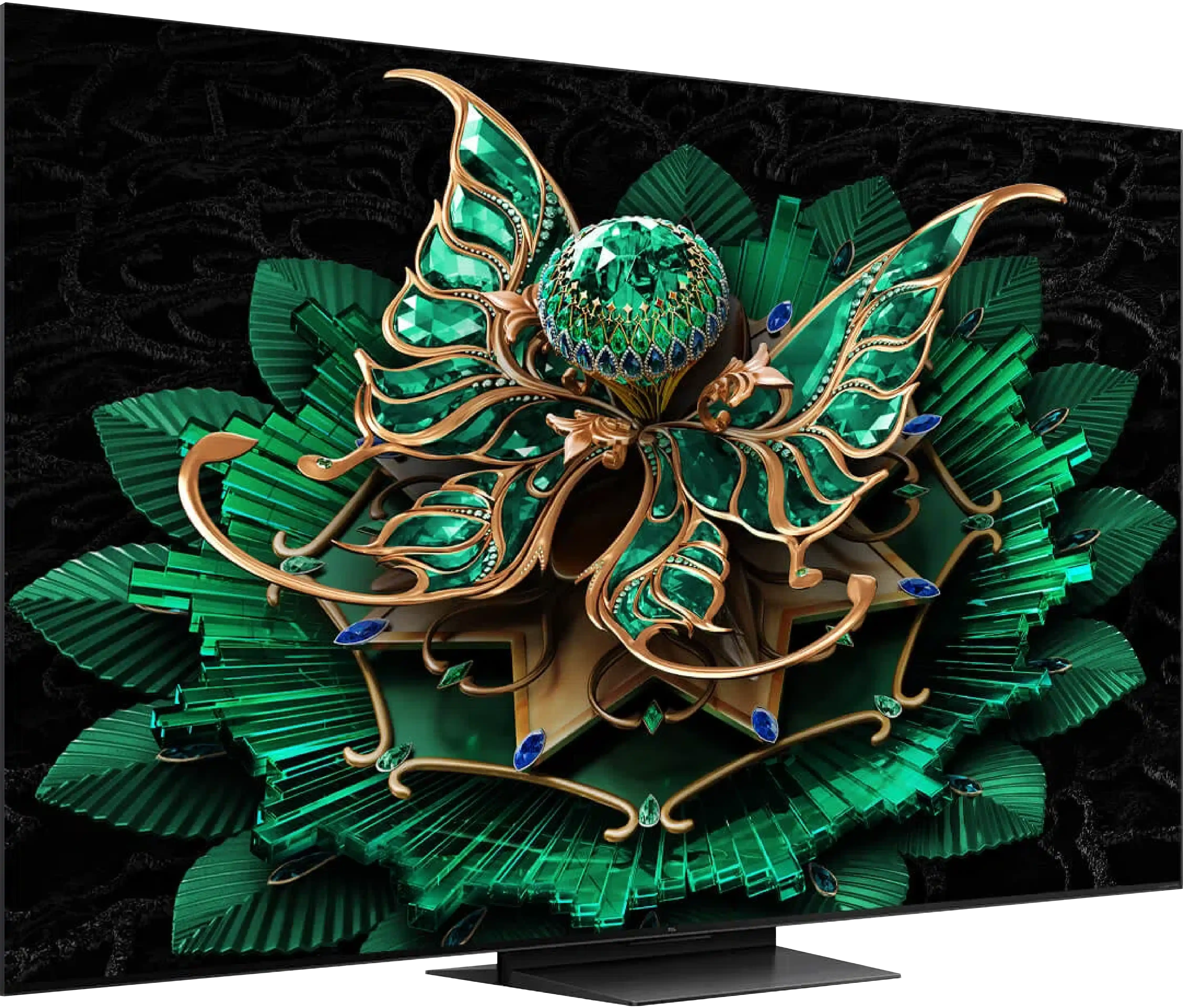
Panel type: LCD VA
Resolution: 3840x2160
System: Tizen
Model year: 2024
Complete the survey to find out the result

Panel type: LCD VA
Resolution: 3840x2160
System: Google TV
Model year: 2025
Complete the survey to find out the result

Overall rating
6.8
7.2
Movies and series in UHD quality
6.1
6.7
Classic TV, YouTube
6.0
6.5
Sports broadcasts (TV and apps)
6.5
6.6
Gaming on console
8.7
8.5
TV as a computer monitor
8.0
8.4
Watching in bright light
5.4
6.1
Utility functions
7.4
7.3
Apps
8.7
9.6
Sound quality
6.3
7.0
Complete the survey to find out what fits your preferences
Advantages
Excellent performance with consoles and computers
Colour reproduction after the calibration process
Very good performance in sports - advanced motion smoothing system
Smooth and trouble-free operation of the Tizen system
Very good tonal transition quality within this budget
Very good black - VA panel with a large number of Mini-LED zones
High brightness in HDR - over 1000 nits
Great for gamers - HDMI 2.1, low input lag, VRR, ALLM etc.
Good motion fluidity - 144Hz panel
Support for multiple HDR formats: HDR10, HDR10+, Dolby Vision
Google TV operating system with access to a huge app base
Pleasant sound from built-in speakers
Disadvantages
Possible noticeable light leaks
No Dolby Vision support
Google TV can have minor stutters
No USB recording and PiP function
Our verdict
There are TVs that come for testing, and you immediately think: "oh, just another average one, probably like many others." And essentially... that's true. The TCL C7K doesn't try to dethrone OLEDs, nor does it scream "revolution!" from the box. And yet, after a few days of testing, it's hard not to think: "wow, this is really good gear." And that's exactly what the C7K is. The biggest advantage of the C7K is the decent picture at a reasonable price – MiniLED and quantum dots do their job here. The colours are vibrant, the brightness is satisfactory, the contrast impresses, and with the right settings, you can truly enjoy viewing in the best quality. The second strong point is motion smoothness – both in sports and gaming. Support for HDMI 2.1, variable refresh rate, 144 Hz, and a whole heap of other features makes gaming on this TV a pure pleasure. On top of that, there's Google TV, which – despite some minor shortcomings – offers access to almost an endless library of apps. Voice control, quick access to YouTube, Netflix, AirPlay support – it has everything you need for daily use. Are there downsides? Of course. The Google TV system can have moments of "hesitation," and MiniLED – like any MiniLED – can stumble on very challenging movie scenes. But these are details. After all, the C7K is a mid-range model – and in this class, it performs remarkably well. So if you’re looking for a reasonably priced, modern TV with Google TV that looks good, works well, and sounds pretty decent without breaking the bank – the TCL C7K definitely deserves your attention.
TV appearance




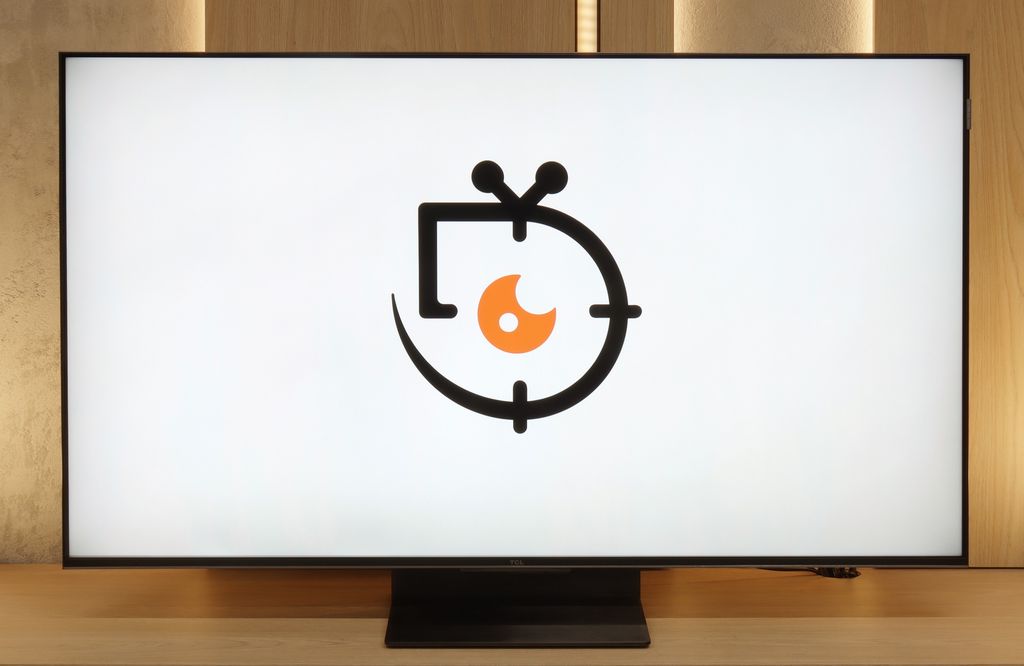
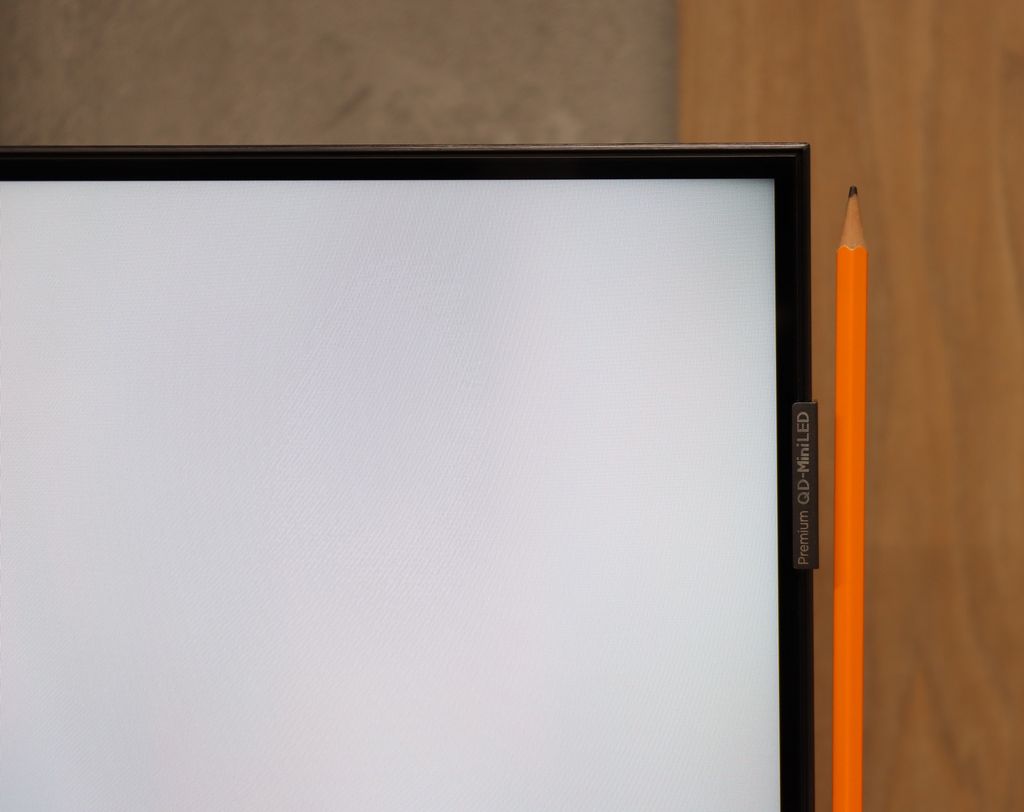
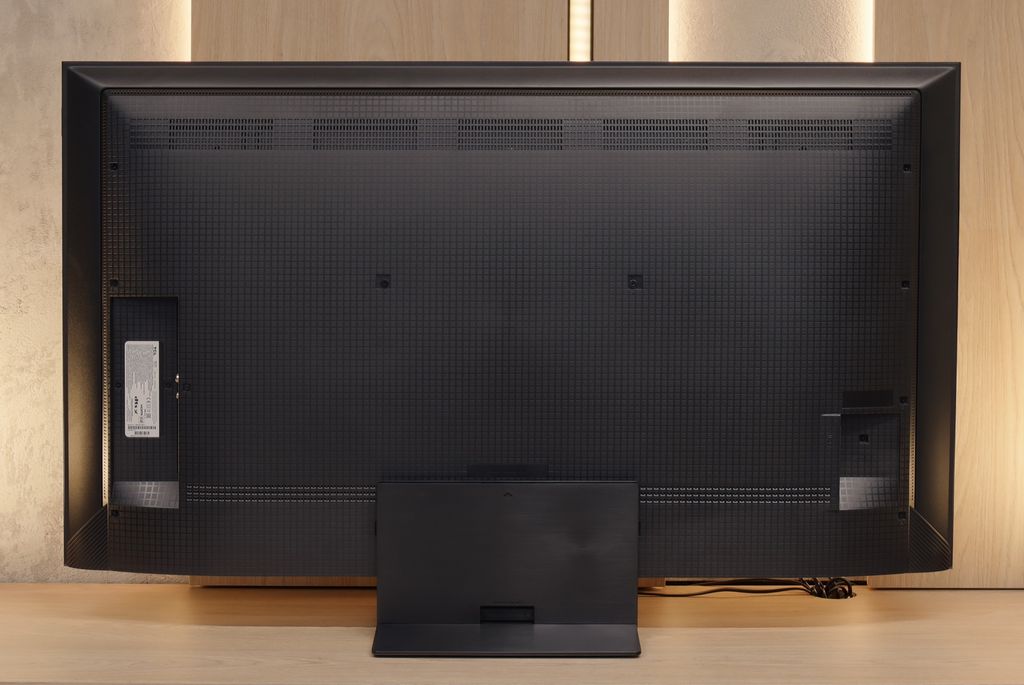
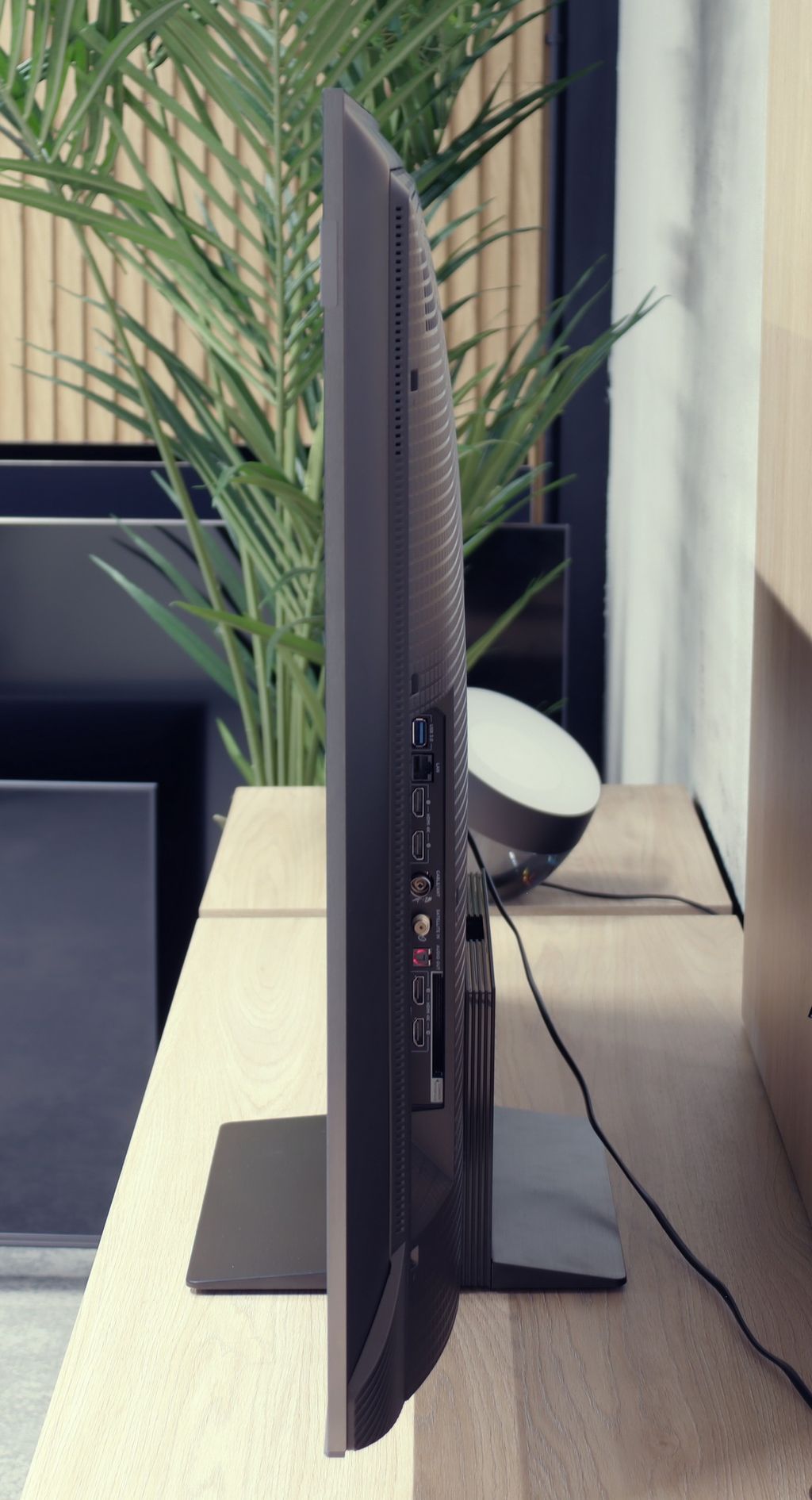
Contrast and black detail
5.4/10
7.1/10
Local dimming function: No
Local dimming function: Yes, number of zones: 336 (14 x 24)
Contrast:

Result
2,450:1

Result
5,150:1

Result
6,550:1

Result
5,850:1

Result
2,800:1

Result
161,000:1

Result
18,750:1

Result
13,150:1

Result
6,300:1

Result
4,200:1
Halo effect and black detail visibility:

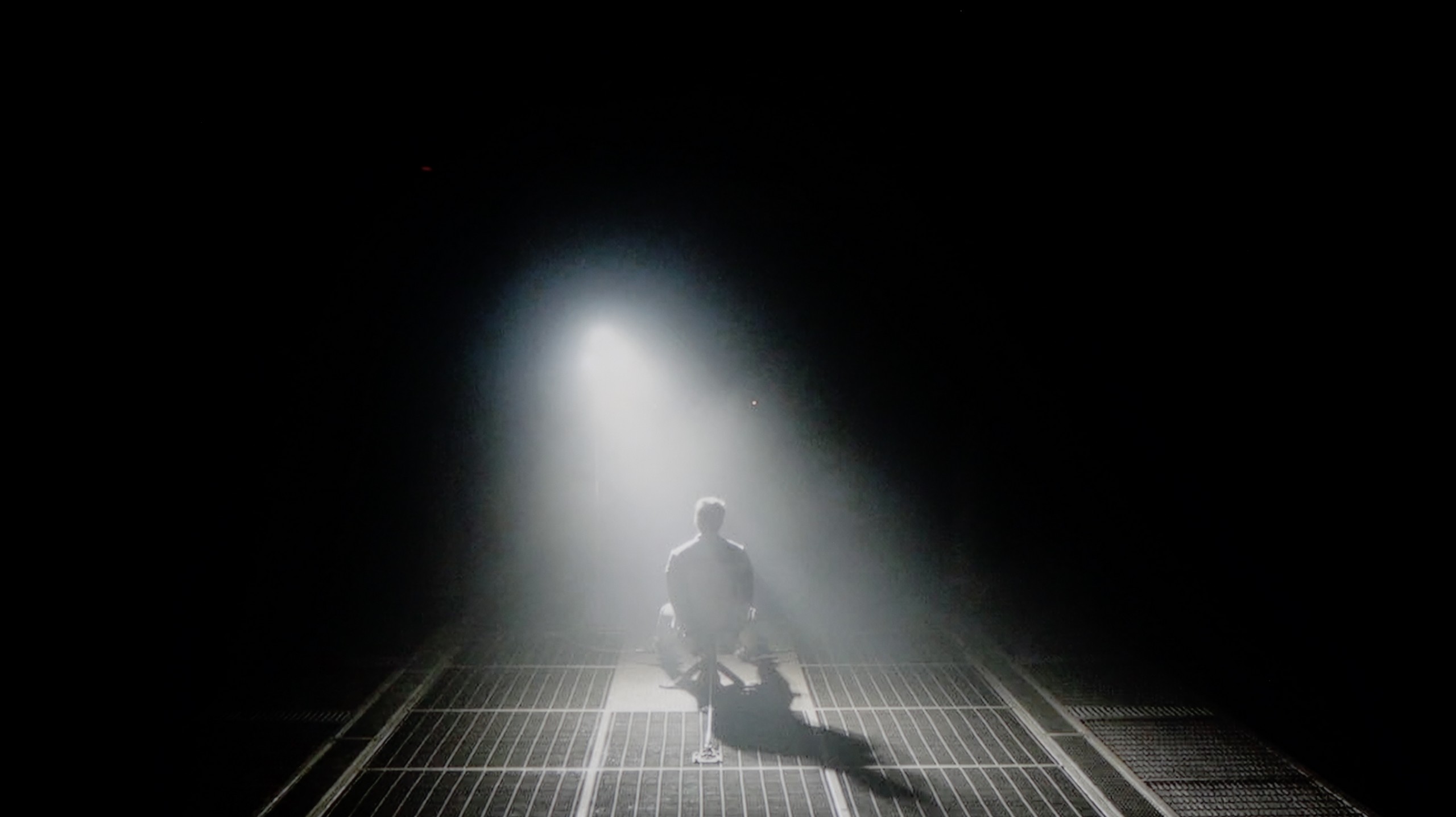

Samsung Q70D and its related models, such as Q77D and Q74D, use a VA panel, which should inherently provide decent contrast. Typically, it is several times higher than that of IPS/ADS screens that do not come equipped with an advanced local dimming system. As you can see, contrast results are quite varied, which is caused by the unevenness of the panel. Therefore, we might sometimes get good contrast, and other times it can be significantly worsened, but generally, it remains fairly consistent, aside from light bleed. Let’s take a look at the film scenes we prepared from "Oblivion" and "Revenant." As we can see, in the first one, the lights are well separated, which is a positive phenomenon, as the visibility of details in bright areas in further tests should be equally good. What stands out the most here is the unusual oversharpening of the smoke visible under the light and the navy black in the background. In the frame from the second film, the first thing that stands out is the unevenness of the backlighting of our piece. This was significant and strongly affected the perceived image. Nonetheless, the details in the film were well visible.
The 50-inch TCL C7K we tested surprised us right from the start – it's the smallest model in the series, yet it's equipped with a VA panel with MiniLED backlighting and – get this – as many as 336 dimming zones. By comparison, many far larger TVs from higher tiers would be happy to boast such a number. Here we have it in a 50-inch version. Sounds promising, right? So how does this translate into real viewing experiences? In the overwhelming majority of tested scenes – very well. The contrast was high enough that in measurements it reached even six-figure values, which in practice means very deep blacks and well-separated highlights. In scenes from films like The Revenant or Oblivion, the effect was impressive, matching the best LCD screens in this class.
Not everything, however, went perfectly. Despite the impressive number of zones, managing them wasn't always exemplary. In more complex scenes, where small light sources or a high level of detail appear, the TV had issues with the so-called halo effect (a glowing aura around bright objects) or overly aggressive dimming of the image. In such situations, contrast could either collapse due to overexposure of some zones or, conversely – details in bright areas vanished because the zones were suppressing light too much. Nevertheless, it's worth emphasising that in the vast majority of scenes the contrast was more than satisfactory. And considering the size of the TV and the price, the final effect will satisfy not only average users.
HDR effect quality
5.5/10
5.4/10
Luminance measurements in HDR:

Result
433 nit

Result
461 nit

Result
477 nit

Result
475 nit

Result
490 nit

Result
1051 nit

Result
185 nit

Result
454 nit

Result
200 nit

Result
836 nit
Scene from the movie “Pan” (about 2800 nits)


Scene from the movie “Billy Lynn” (about 1100 nits)


Static HDR10


Dynamic: HDR10+
Dynamic: Dolby Vision


HDR luminance chart:
TCL C7K / QM7K
HDR luminance
Samsung QLED Q70D / Q74D / Q77D
HDR luminance
Luminance of RGB colors
The brightness that the Samsung Q70D can offer is at a rather average level, although it cannot be said that the HDR effect will not be noticeable. Any brightness above 400 nits allows for a clear distinction between SDR and HDR content. As was the case in the paragraph about contrast and black levels, we can also observe here that the first scene, featuring a bright sunny sky and a darker foreground, has the lowest luminance of those measured. The result, which can be considered very good for this price range and display class, is that one. In a scene where we see a large light source filling a significant portion of the frame, the brightness of the TV is at its highest, reaching nearly 500 nits. However, it is worth noting the rather low coverage of the wide DCI-P3 colour gamut, which sometimes results in noticeable shortcomings in the colour reproduction. Additionally, users can enjoy rich colours and high precision in rendering shades, making movie screenings a unique experience. It is also worth mentioning that the Q70D Samsung panel performs excellently in eliminating blur during dynamic action scenes, which enhances the viewing comfort of sports broadcasts or games.
TCL C7K is one of the brightest MiniLED TVs in its price class. Under optimal testing conditions, the screen can achieve over 1200 nits, resulting in impressive, at times dazzlingly bright scenes. And most importantly – this isn’t just a theory from measurements. In practice, even the brightest moments in movies can shine with true cinematic grandeur. Home HDR cinema fans should be really pleased.
The impression is fantastic, especially in scenes with large areas of brightness – a white sky, explosions, sun reflections, or magical sunsets can surprise with an intensity of light that rarely appears in this price range.
However, things get a bit worse when more challenging scenarios appear on the screen, previously described in terms of contrast – that is, images full of details, with small bright elements on a dark background. In such cases, the C7K often opts to preserve black at the expense of brightness. An example? Scenes from movies like Sicario 2 or Life of Pi, where small light sources (like a distant lantern) may become less visible, and details in the lights are simply dimmed or blend into the background.
For many viewers, this may be an acceptable compromise – as we achieve deep blacks and pleasant image depth. Nevertheless, it’s important to recognise that the visibility of small details in bright areas is not this model's strong suit. It’s simply a technological limitation that still exists – even with over 300 zones.
Factory color reproduction
6.1/10
6/10


Factory Mode
After calibration
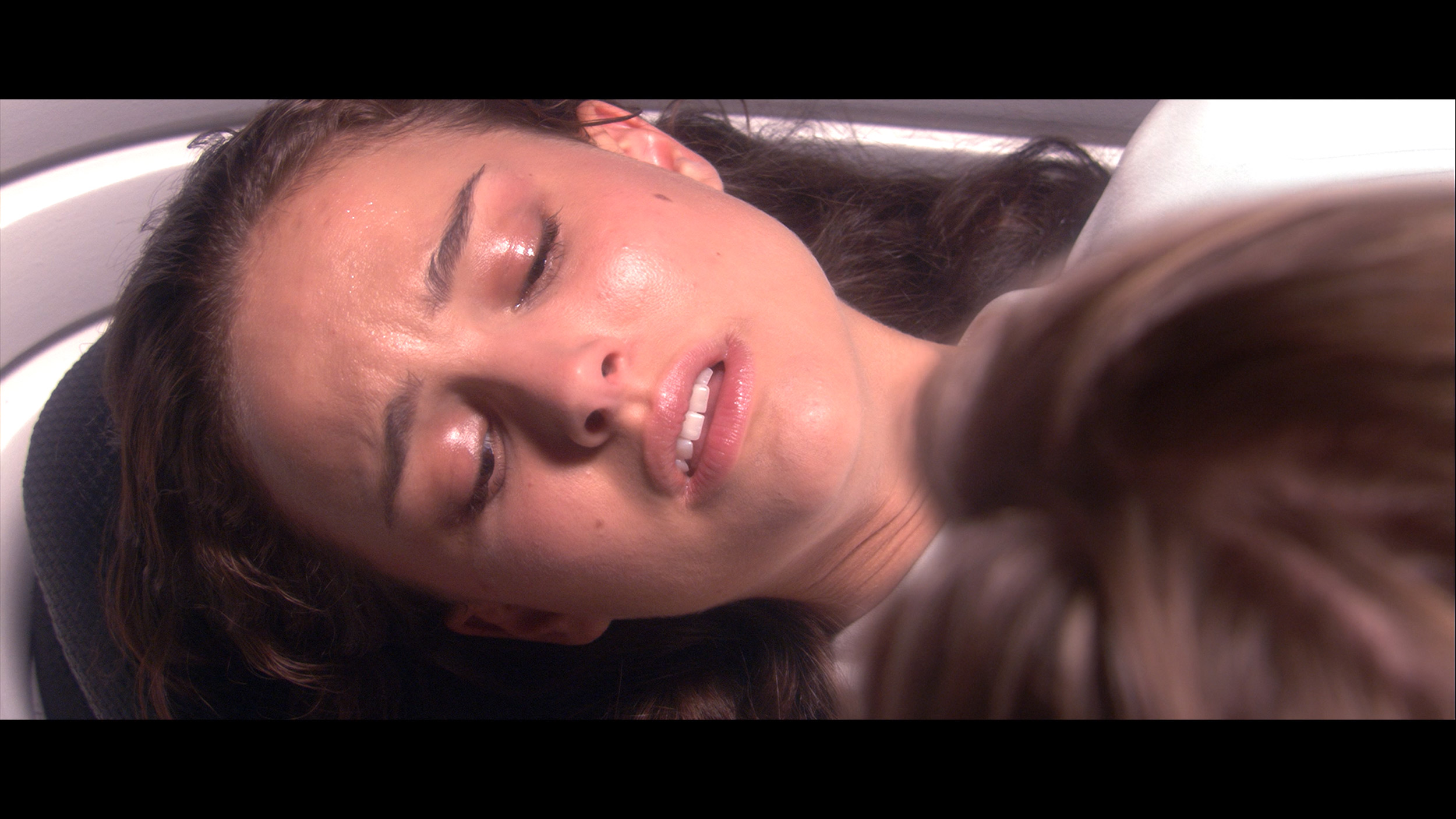
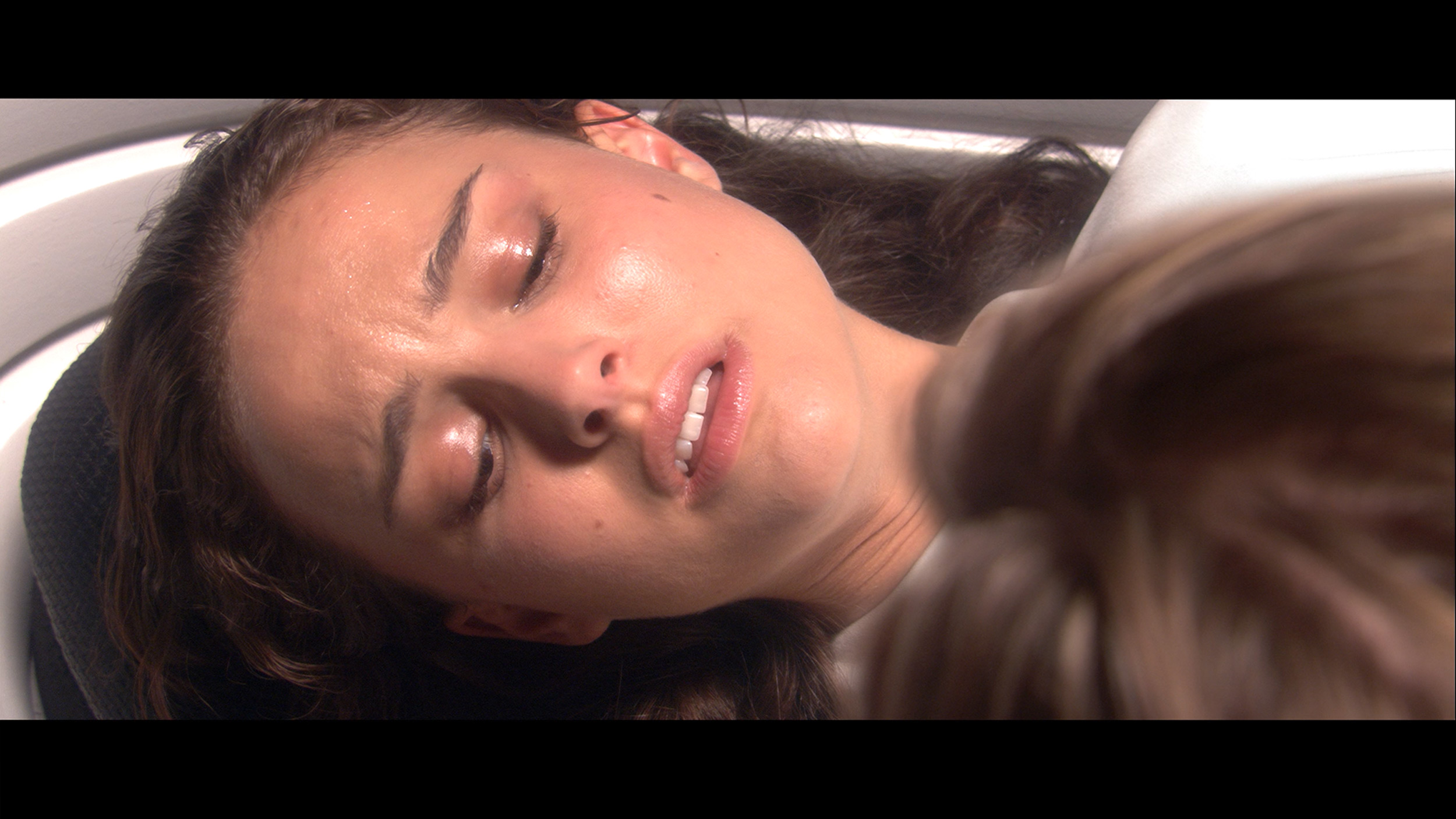
Factory Mode
After calibration
The best factory mode in Samsung Q70D is "Filmmaker," and it was this mode that we used during all our tests. Before the calibration process, it had several flaws that effectively hindered the presentation of the director's intentions. In both SDR and HDR material, the white balance was dominated by red and green colours. As a result, there was a characteristic yellow tint on the image, which caused whites to appear yellowed and skin tones to be noticeably too warm. The reduced gamma in standard colour palette materials caused a significant drop in contrast, which was already not the highest. This led to the highlighting of details in the blacks, but also to clipping in brighter scenes. In this case, the EOTF curve proved to be much better and only brightened those scenes with quite low luminance. This was clearly visible in the section where we measured the maximum brightness of the television in HDR materials. At that time, a shot from the film "Billy Lynn" appeared unnaturally bright and lacking depth.
A new feature in TCL televisions for 2025 is the long-awaited Filmmaker mode, which until now has been found in most competing brands. This is great news, as this mode is considered the most faithful to the original vision of the creators and is often recommended by enthusiasts of quality visuals. Unfortunately – as is often the case – the mere presence of it does not guarantee perfection. The Filmmaker mode in the TCL C7K is not without its faults. There are issues with inaccurate white balance, particularly a slight blue tint that resulted in cool, somewhat greyish skin tones. But that wasn’t the biggest problem. The main complaint was excessive brightness exposure, which is clearly visible on gamma and EOTF charts. The image was simply too bright, at times even blown out, which affected not only the texture of scenes but also the overall viewing experience. Some details were just lost, and the entire image looked as if someone had overdone the brightness slider. As always, we decided to see what could be squeezed out of it after calibration. And this is where things started to get really interesting…
Color reproduction after calibration
8.1/10
7.5/10

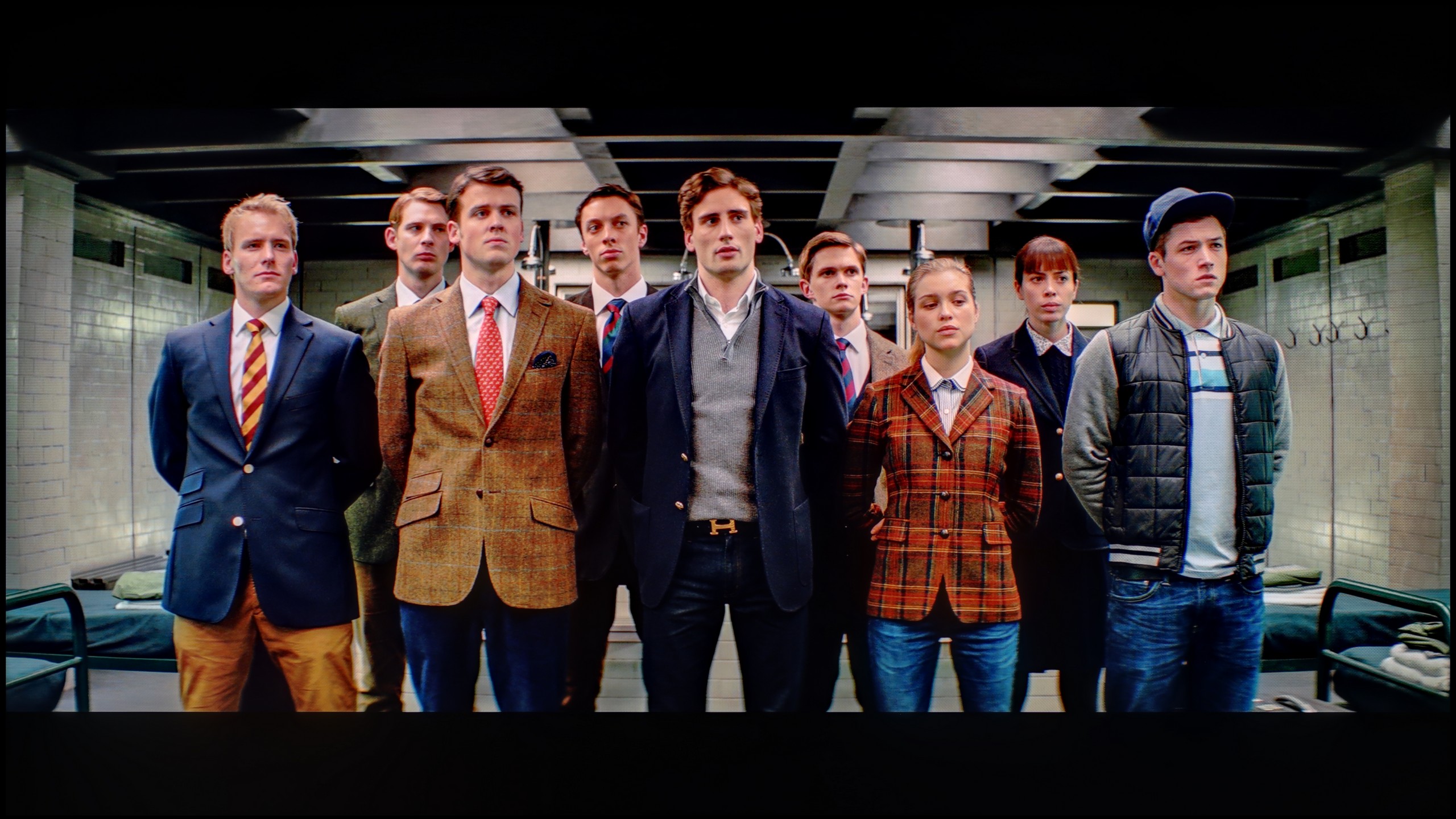


Fortunately, Samsung provides a wide range of calibration tools in all its TVs, including 2- and 20-point grey scale adjustments and advanced CMS. As a result, we were able to significantly improve the quality of SDR and HDR content. The vast majority of errors have been corrected, and the image that the Samsung Q70D now delivers is definitely much closer to the reference. Higher deltaE errors in wide dynamic range content primarily result from the display's insufficient luminance.
After calibration, the TCL C7K showed itself in a really good light, especially when it comes to SDR content. We managed to precisely tune the white balance, colour gamut, and brightness characteristics so that the colour errors on the ColorChecker palette fell below a value of 2. For the uninitiated – this is nearly a perfect result, which means that the image is very close to what the creators intended. Unfortunately, it was a different story with 4K HDR content. While we were able to slightly calm down the white balance and correct its earlier errors, it was still evident that the TV has some "MiniLED traits", particularly in brightness management. When we checked how the C7K handled the EOTF curve on real film scenes, rather than just on synthetic test patterns, it turned out that the screen still had a tendency to slightly brighten the entire image. This affects the overall experience – the black loses some depth, and the image becomes less contrasty than it should be. Despite these minor issues with HDR content, the overall reception of materials – especially in SDR – is really very good. After calibration, the C7K can display an image that can successfully compete with much more expensive models. Good colour tuning, natural skin tones, and pleasant brightness make movie watching and everyday content viewing more than satisfactory.
Smoothness of tonal transitions
6.9/10
8.6/10





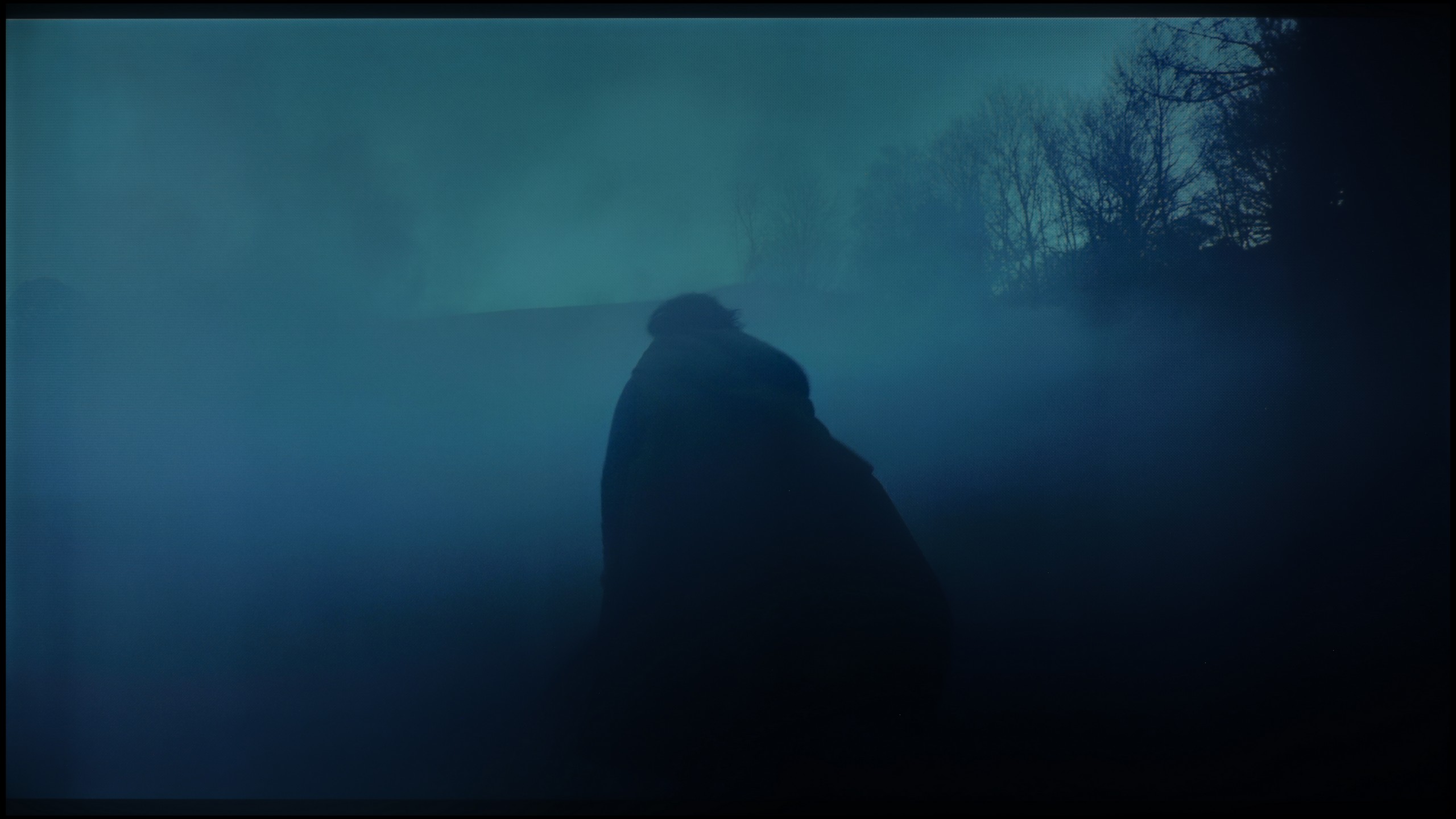






Considering how important lighting is in films and series, the overlapping structures and fluidity of tonal transitions constitute an extremely significant element in assessing image quality. The colour grading on the tested television is at quite a decent level. It cannot be said that it is outstanding, but it is not bad either. We assess it as acceptable. Brighter scenes perform best here, demonstrating the least amount of choppiness. In scenes recorded in darker settings, slight shortcomings in grading can already be noticeable, although it is not an issue that would cause discomfort while watching. This may be disturbed by the leaking backlight, which is clearly visible in the last image.
The TCL C7K performs very well with colour gradation – in most of the scenes tested, tonal transitions were smooth, and colours blended together without visible outlines or the artificial effect of "blotches". In everyday use, it's hard to find any faults – the picture looks natural, without jarring transitions or digital artifacts. Certain limitations only appear in very dark tones – especially in a heavily muted grey palette, where the television may struggle to reproduce the ideal gradation. But that’s absolutely understandable, as even many significantly more expensive models in this range simply can't cope. Fortunately, these situations are rare and don’t really affect the overall perception.
Image scaling and smoothness of tonal transitions
7/10
5.5/10
Smooth transition function

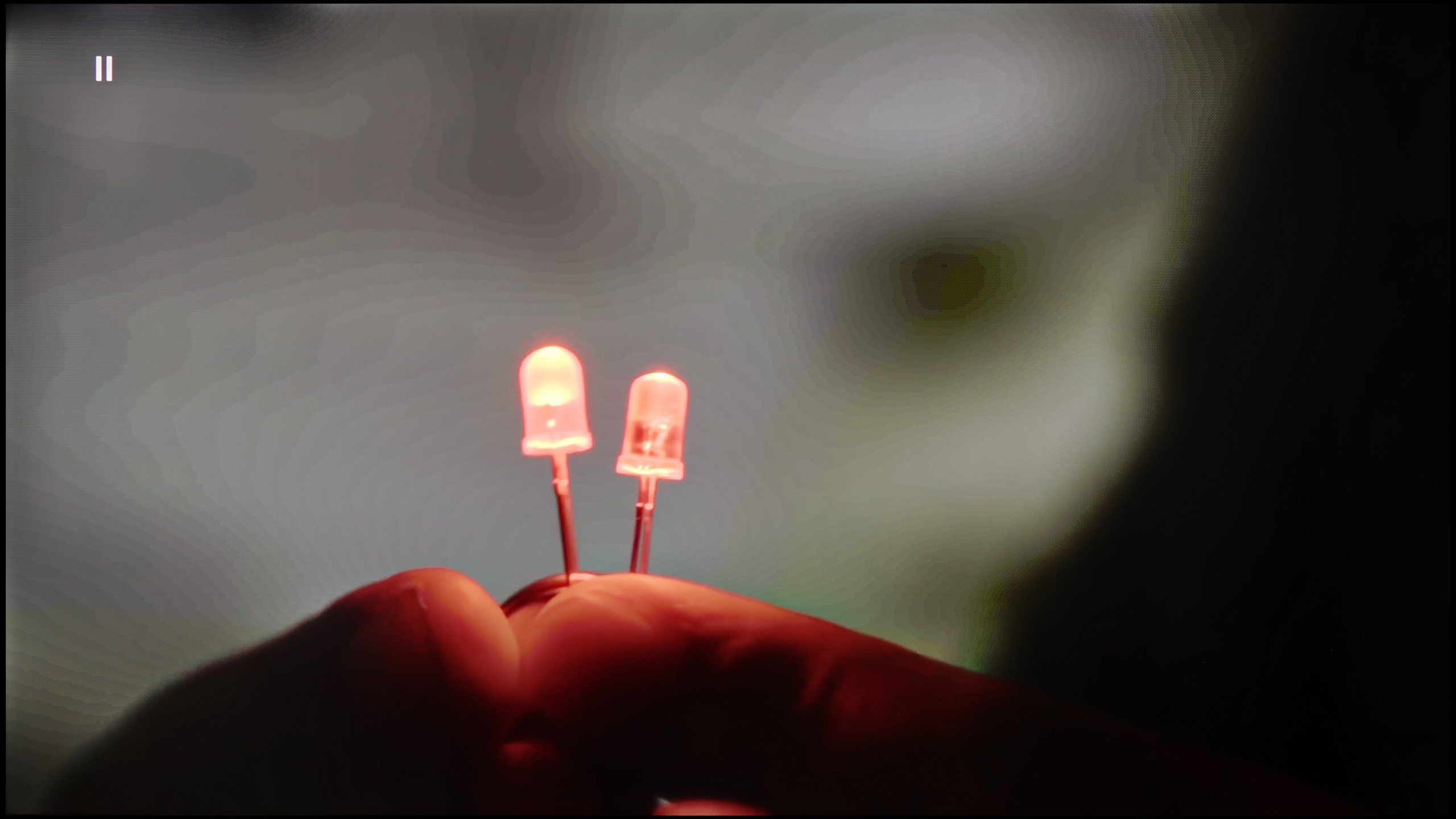
Image without overscan on the SD signal


The function responsible for improving gradation is named "Noise Reduction" in the menu. As we have confirmed, it is worth enabling as it has a beneficial impact on tonal transitions. More importantly, it does not negatively affect film grain or fine details, which sometimes the competition "offers" us.
The image scaling on Samsung Q70D should be rated as average. The manufacturer does not aim to artificially sharpen the image, but rather to keep it naturally softened.
TCL C7K has a feature that, according to the manufacturer, is meant to smooth out undesirable colour transitions – something like a rescue for less successful tonal shifts. It's called "Gradual Smoothing," and... well, it sounds ambitious, but in practice, it works very poorly. Regardless of whether we set it to low or high, the difference is minimal. Worse still – the feature can cut out elements from the image that should remain. Fortunately, film grain remains untouched, so at least it doesn't smooth everything indiscriminately, but even so – it's better to simply turn this option off.
When it comes to upscaling lower resolution content, it's already better. SD and HD materials look quite decent, although at times we had the impression that the image loses sharpness and becomes too soft – as if something took away its clarity. Fortunately, with very low sources (e.g., 576p), there was no overscan effect, meaning the image wasn't artificially cropped – everything fit on the screen as it should.
Blur and motion smoothness
7.4/10
8.1/10

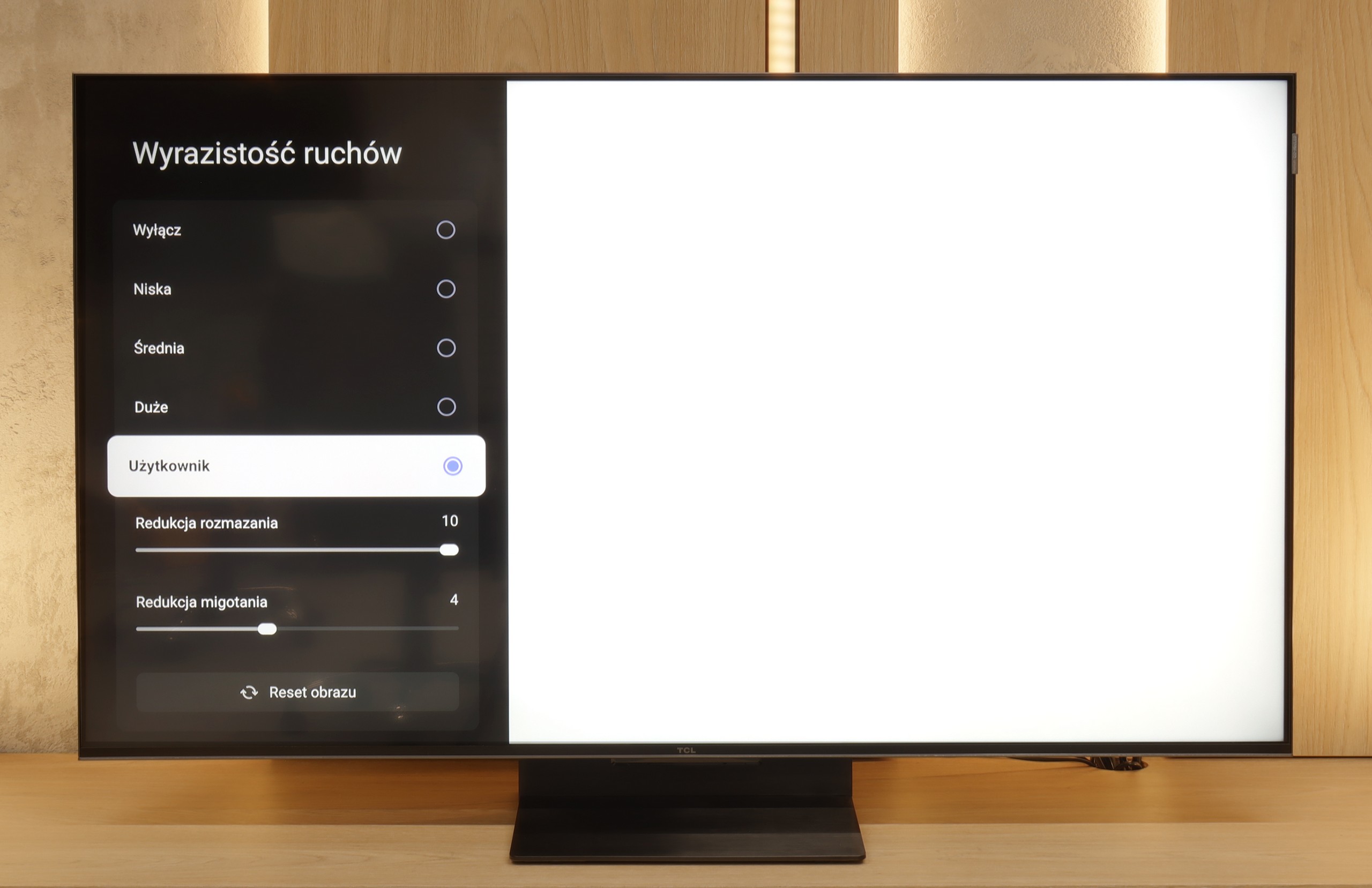
Blur (native resolution, maximum refresh rate):





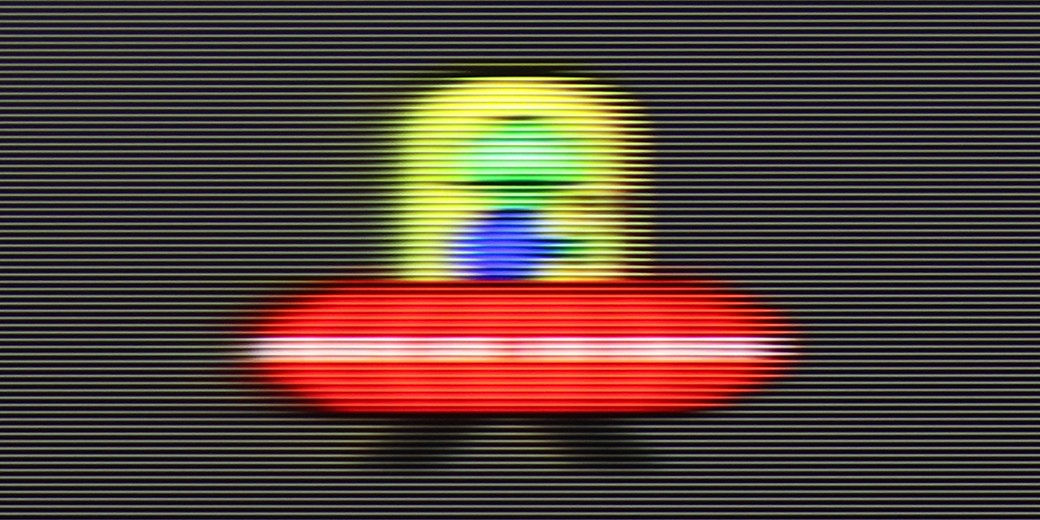
Blur (BFI function enabled):
Image flickers in this mode






Smużenie ():
Smużenie (4K 144Hz):



Samsung Q70D is the first model in the manufacturer's portfolio with a 120Hz panel. As a result, its motion smoothing features are more advanced than those in lower-tier models. In the menu, we find three functions responsible for improving fluidity. They are "Blur Reduction," "Judder Reduction," and "Clear Motion (LED)." We'll discuss the third one later. The first function enhances sharpness in motion, while the second adjusts the level of smoothing. The smoothness enhancer in Samsung Q70D works satisfactorily, and each setting makes a noticeable difference. Therefore, those who dislike the characteristic stuttering of films or who passionately watch sports will be able to achieve their preferred level of smoothness. In the image, we present a setting with slight smoothing, without the soap opera effect.
The panel used in Samsung Q70D has a fairly good response time for this type of display. Of course, it won't deliver an image as sharp as a proverbial razor, but at this price point, it is a recommended choice for all kinds of sports.
TCL C7K handles motion fluidity really well. The panel it uses offers a refresh rate of 144 Hz, which suggests that this TV is more than just a standard "60 Hz" panel. Furthermore, if we connect the C7K to a computer and set the resolution to Full HD. But we will write more about this in the paragraph on gamers and PC compatibility. Returning to everyday use – both sports and movies look very good here. Thanks to the fast panel and the well-functioning motion smoother, the C7K is great for watching matches, but also for movie screenings. In the menu, we find two sliders – motion blur reduction and flicker reduction – that allow you to adjust the fluidity effect to your own preferences. At lower settings, we get a more cinematic effect, with slight judder. At higher settings – the image becomes more theatrical, fluid to the point of excess. Whatever your preference – everyone can set it their own way.
Console compatibility and gaming features
9.5/10
9.8/10
- ALLM
- VRR
- VRR range48 - 120Hz48 - 144Hz
- Dolby Vision Game Mode
- Correct implementation of HGIG
- 1080p@120Hz
- 1440p@120Hz
- 4K@120Hz
- Game bar

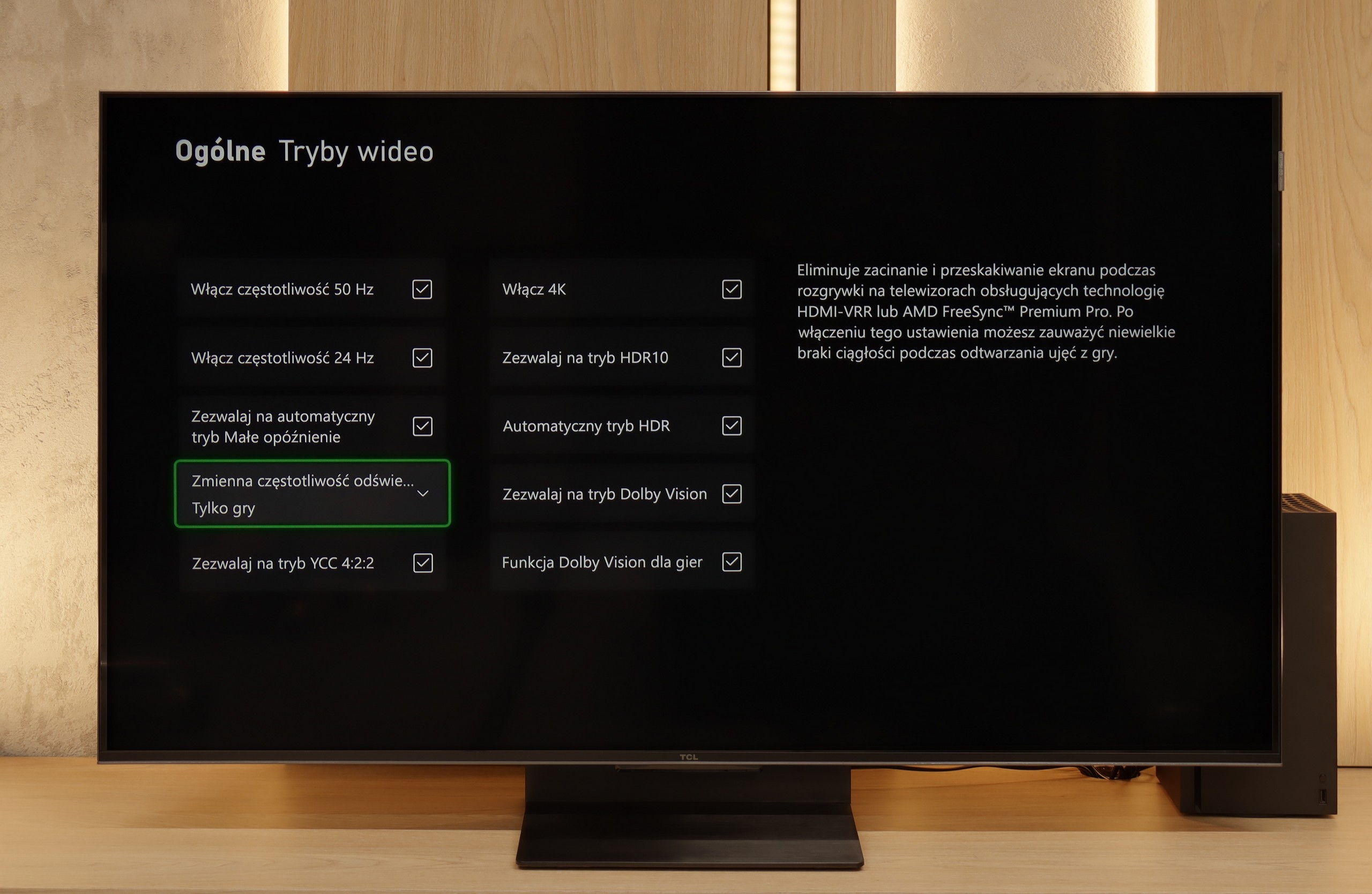

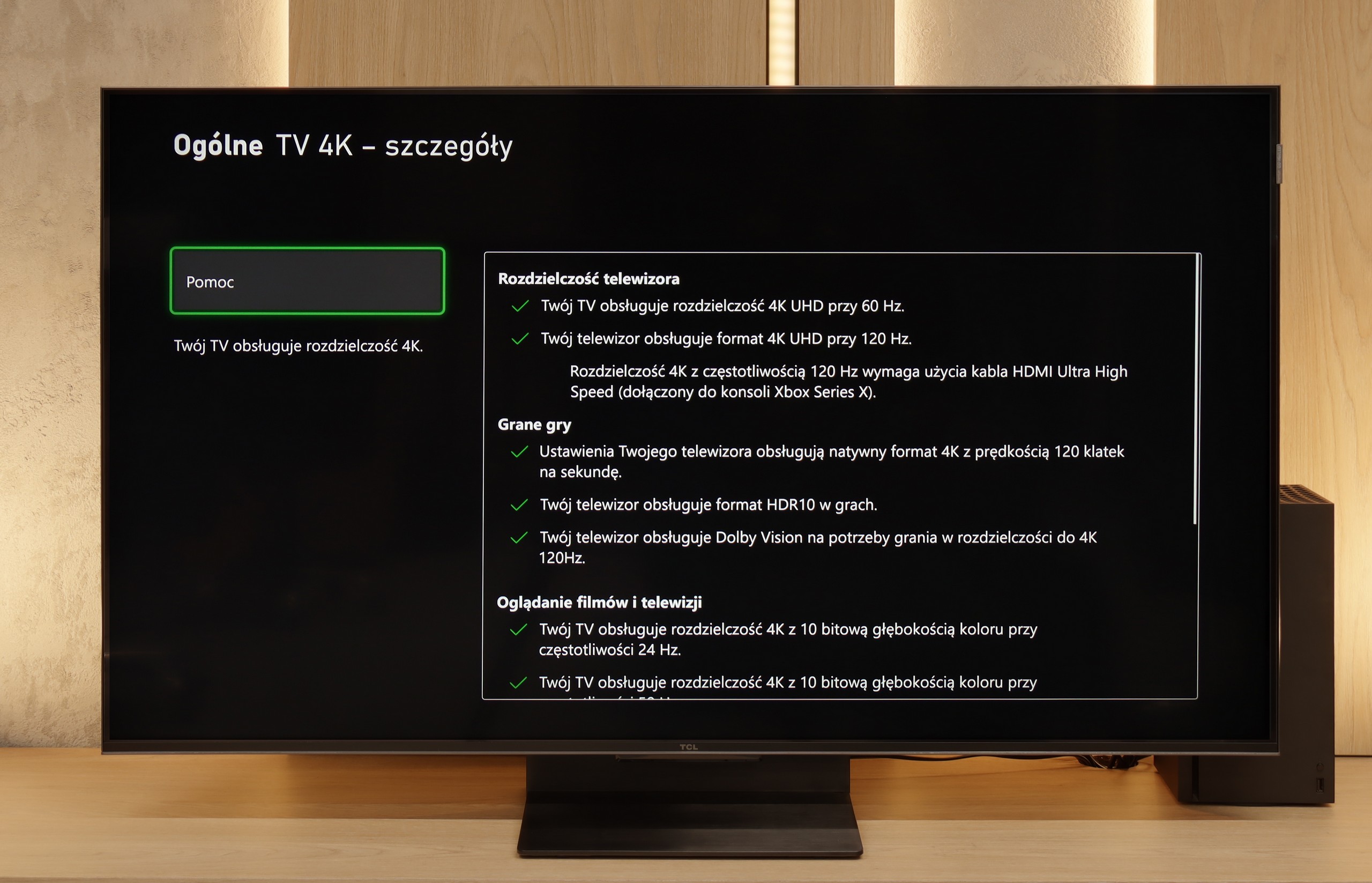

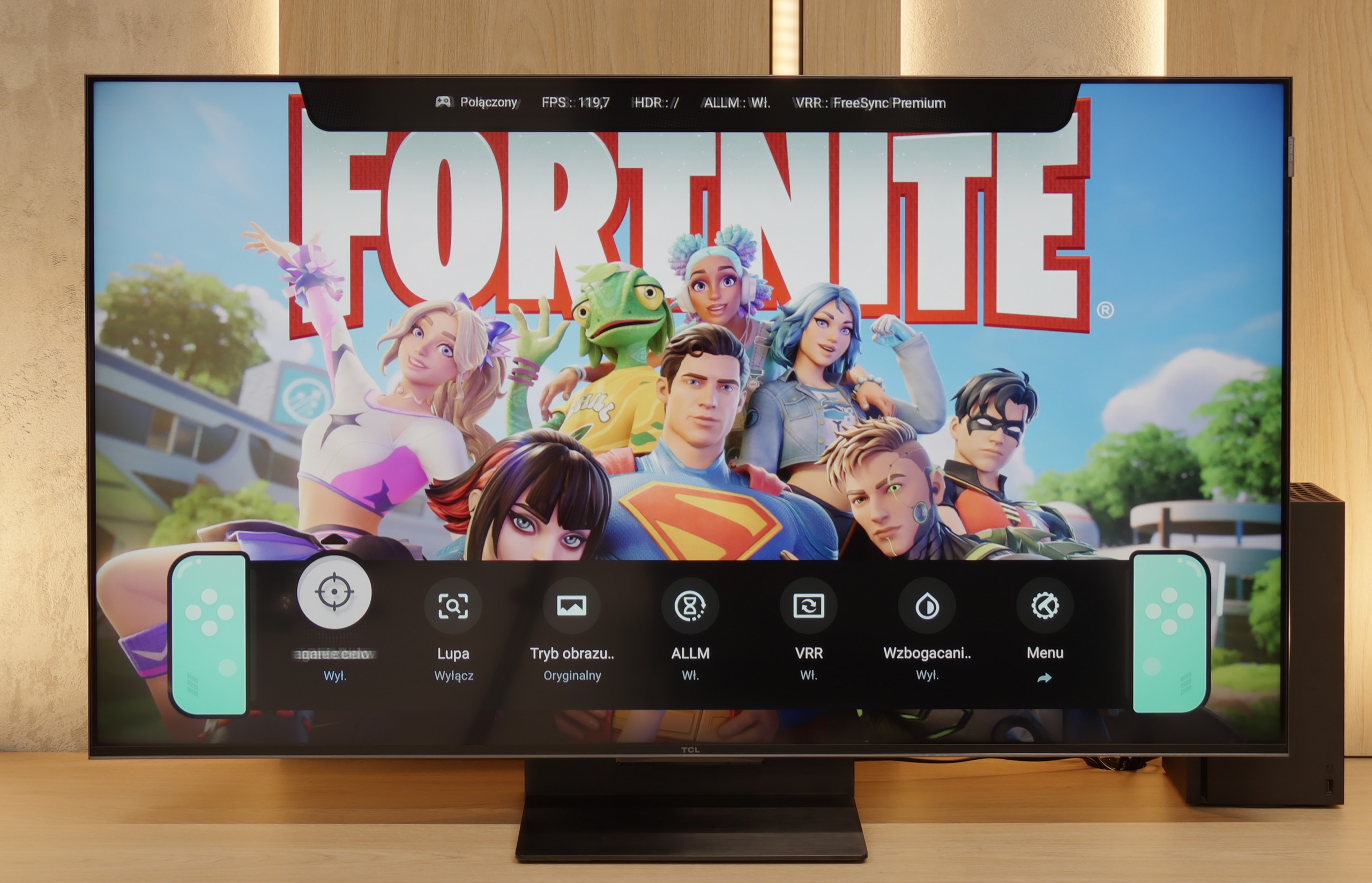

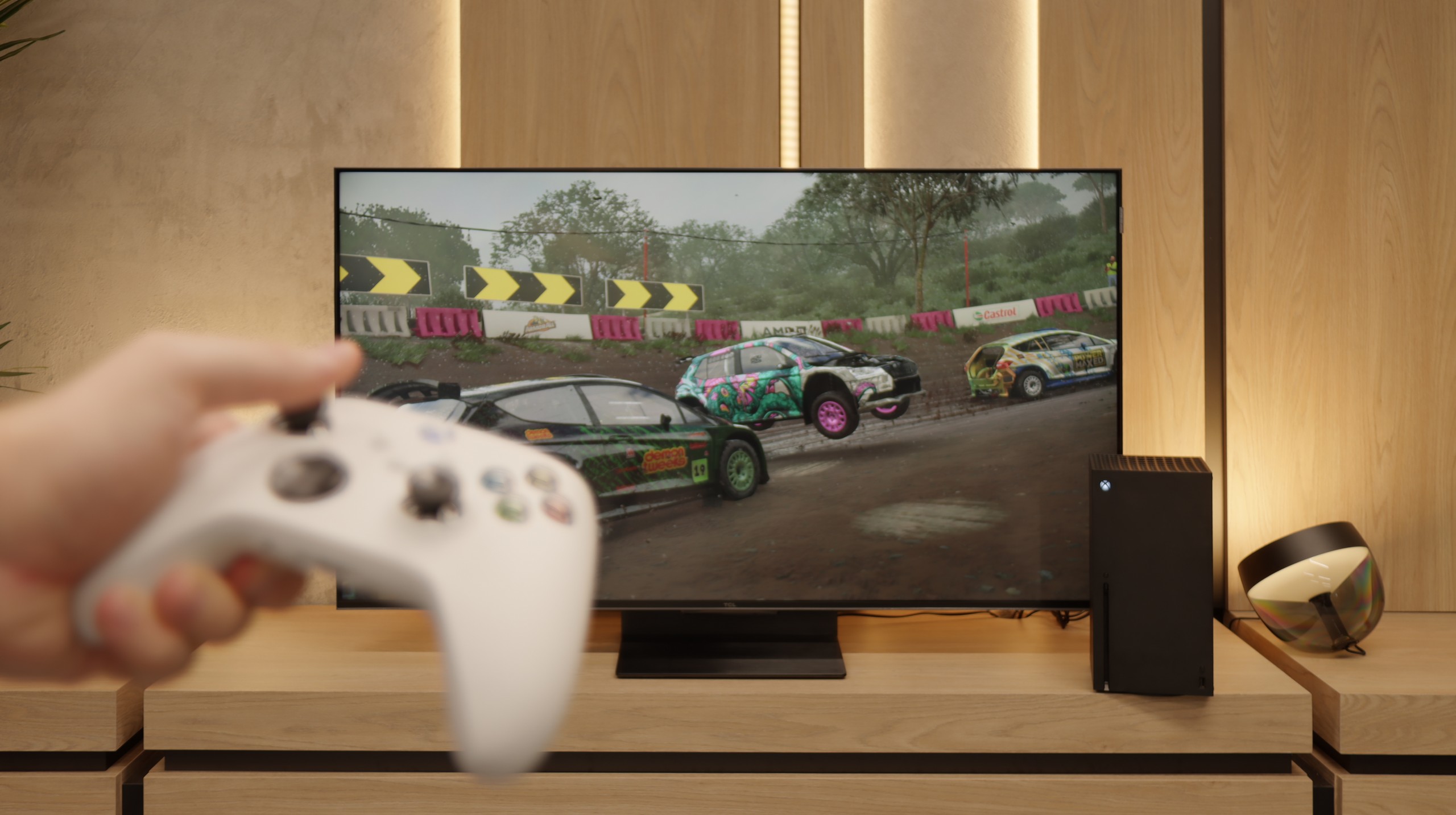
The tested television is equipped with four HDMI 2.1 ports. Interestingly, all of them have a bandwidth of 40 Gbps; however, during the testing process, we did not observe any negative effects associated with this situation. More importantly, Samsung Q70D supports all features stemming from the aforementioned standard. This news will surely delight all gamers, as it means that whether using a console or a PC, we can expect the highest possible comfort during gameplay. Given the standard absence of Dolby Vision HDR for this manufacturer, it is significant that the HGIG mode has been implemented correctly and there are no issues with setting up the calibration chessboard. We particularly note that Samsung is the only manufacturer to allow gaming with the smoothness enhancer switched on, without significant degradation. This means that titles running at 30 fps will be perceived like those with native 60 frames per second.
Samsung, as one of the first manufacturers, introduced the Game Bar to its televisions, which has since been consistently refined. It contains all the necessary information regarding gameplay parameters that we can change "on the fly".
In summary: Samsung Q70D will perform excellently both with consoles and with computers. All functions worked brilliantly, and there were no issues with them. The ability to enable the smoothness enhancer without significant increases in input lag is a true gamechanger.
TCL C7K is a television that on paper looks like the perfect equipment for gamers – and most importantly, it performs well in practice too. Here's some good news: we have two full-bandwidth HDMI 2.1 ports, so we can easily connect both a console and a computer, using all their capabilities. The panel itself supports a refresh rate of 144 Hz, which provides a significant advantage in dynamic games. Additionally, it comes with a full set of gaming features: VRR (variable refresh rate), ALLM (automatic low latency mode), and support for Dolby Vision in games. There's also an HGiG mode that allows for HDR effects that align with the creators' intentions. GameBar, which is an information bar for gamers. It operates quickly, looks clear (like a Nintendo console👌), and shows what's most important: the current frame rate, VRR status, and even HDR parameters.
Input lag
10/10
9.7/10
SDR
HDR
Dolby Vision
Results of latency on the Samsung Q70D are at a high level, regardless of the signal or resolution. All gamers will certainly appreciate the manufacturer's efforts, which allow a game running in 4K 120 Hz with HDR to have only 7 ms of latency, which is practically unnoticeable even in online gaming. It's worth adding that lag with the motion smoother turned on roughly doubles, which still means very comfortable gaming in this case.
When it comes to delays, the C7K gives no reasons to complain. In games at 120 Hz, the input lag is around 10 ms, which means that the TV responds really quickly. Interestingly, even in Dolby Vision mode, the result is very similar, which isn't always the case. Good job, TCL. At 60 Hz, the lag does increase a bit, but that's completely normal and applies to pretty much every TV with a refresh rate of 120Hz and above. The most important thing is that everything still runs smoothly and there's no feeling that something isn't responding to our actions.
Compatibility with PC
8/10
8.4/10

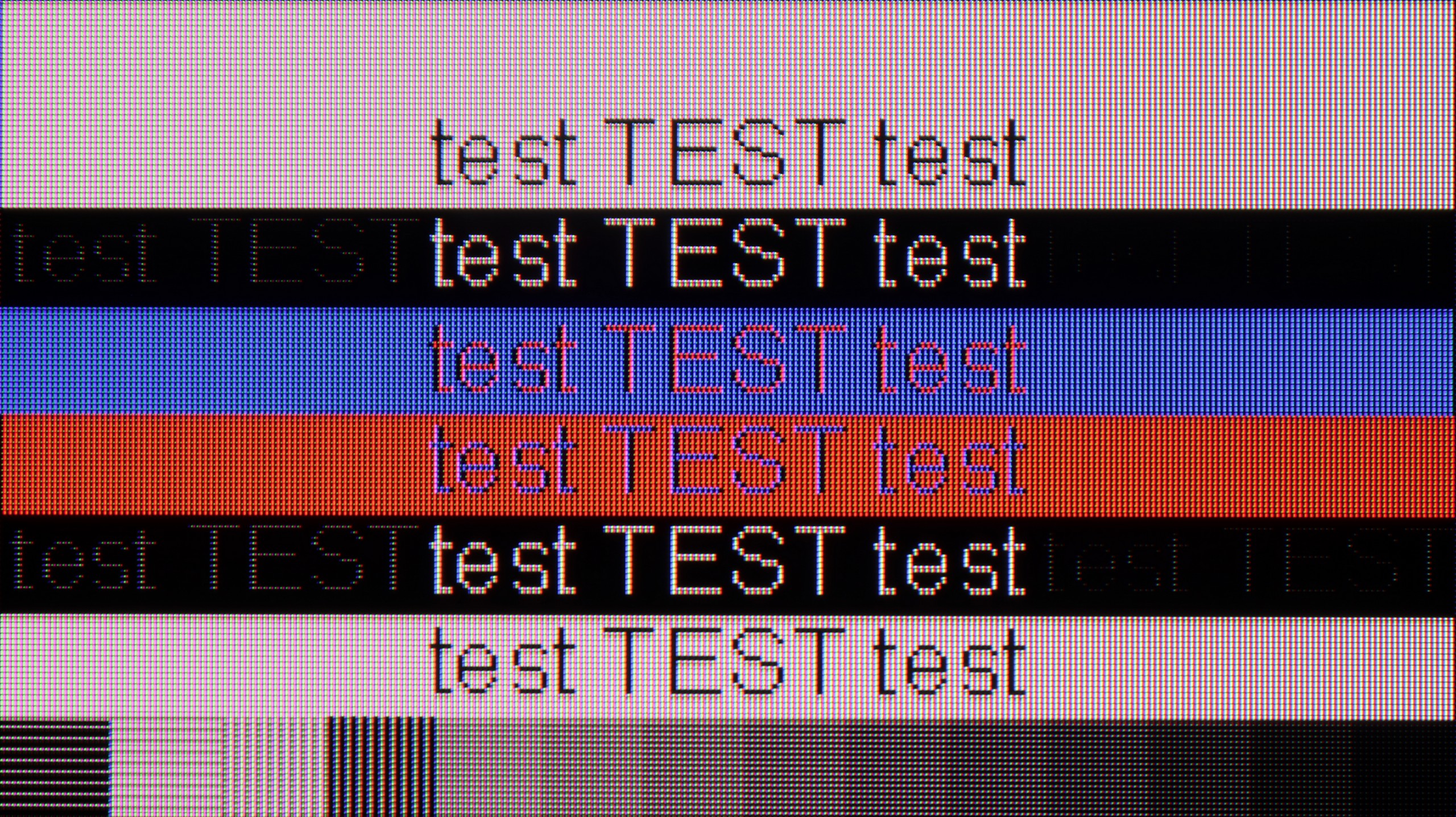
After connecting the television to the computer and wishing to use it as a monitor, we can expect a low input lag of 13 ms, which is practically unnoticeable on the mouse-screen-eye line. Thanks to the correct implementation of chroma 4:4:4, the readability of fonts is at a high level, so you can confidently connect Samsung Q70D to your computer as a monitor and expect a comfortable experience with text.
The subpixel layout is BGR, which does not negatively affect the use of the television as a monitor. However, as operating systems are not adapted to this type of subpixel format, it may cause slightly less distinct contours. This is, however, something practically negligible, and only a handful of people may notice it.
If we plan to connect the C7K to a computer – especially for gaming – there's definitely a lot to play with. We have 4K at 144 Hz, which already sounds great, but if we drop the resolution, the TV can even display 280 Hz. In e-sports, where every split second counts, this really makes a difference. On top of that, it supports G-Sync and FreeSync, so no matter what graphics card we have – the image will be smooth, with no stuttering or tearing.
But if we plan to put the C7K on a desk and use it like a monitor, it's a bit less "rosy." Sure, it supports chroma 4:4:4, so fonts should be sharp, but with very dark letters, you can notice slight blurriness and edge dimming. It's not something that immediately stands out during gaming or watching, but when working with text – it can be distracting. In everyday use – relatively worry-free, but if we plan to have a 50-inch screen a metre from our face, it's worth keeping this in mind.
Viewing angles
2.9/10
3/10
Due to the VA panel, the performance of Samsung Q70D in terms of viewing angles is its Achilles' heel. Even a slight shift off-axis leads to a significant loss of contrast and a substantial degradation of colours.
There's no surprise here – the C7K has classic viewing angles for a VA panel. That is: we sit directly in front – it's excellent. Colours look good, contrast is strong, everything is in place. But just shifting slightly to the side starts to make things worse – the image loses saturation, the blacks turn grey, and the overall impression diminishes a bit. So if we plan to watch together with a few people or have a sofa that takes up half the lounge – it’s worth seating everyone more centrally. You can watch from the side, but don’t expect miracles – it’s simply a characteristic of the VA panel.
TV efficiency during daytime
5.4/10
6.1/10

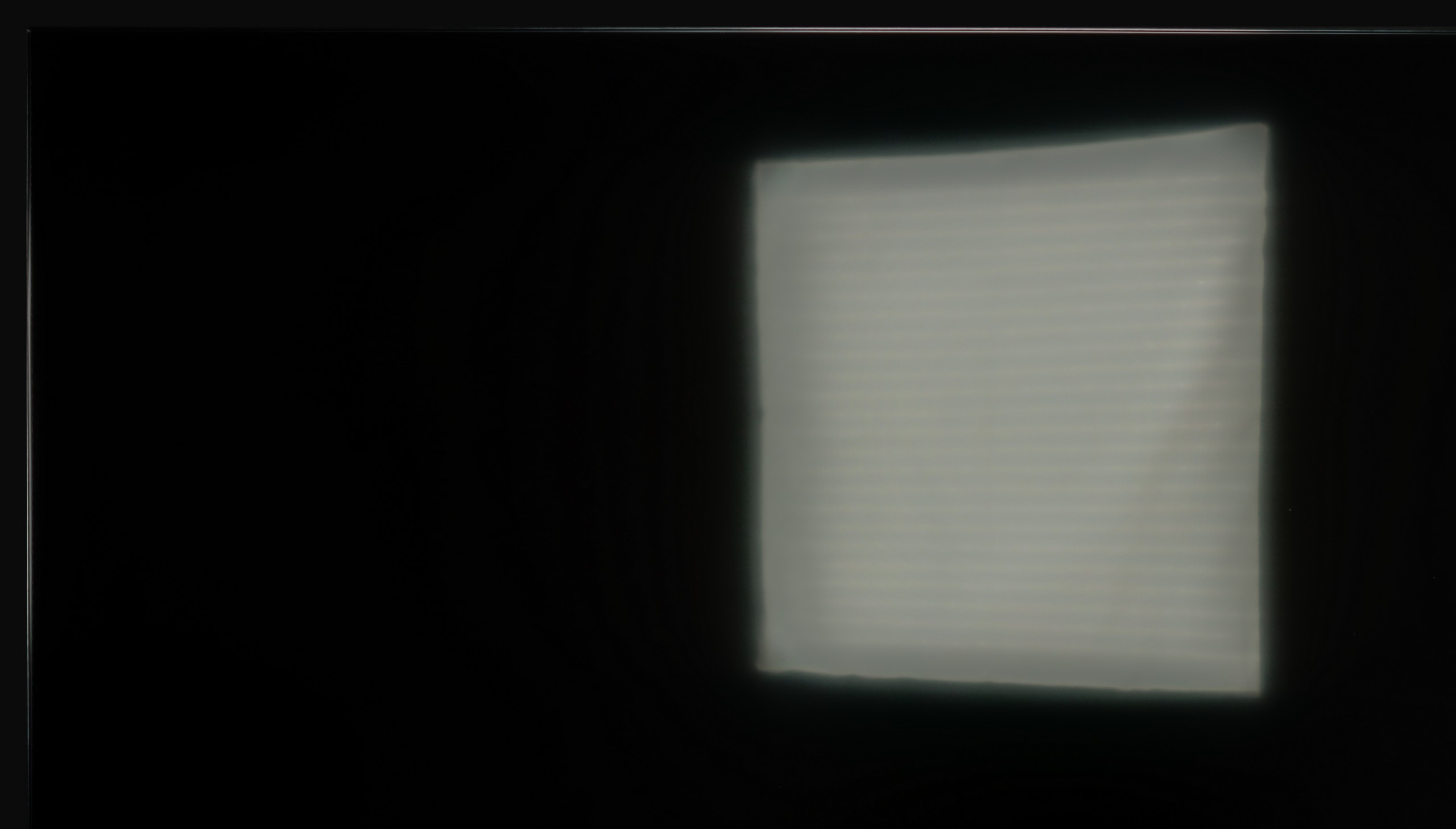


Matrix brightness
Average luminance SDR
TCL C7K / QM7K: 475 cd/m2
Samsung QLED Q70D / Q74D / Q77D: 449 cd/m2
The satin finish of the panel in the Q70D allows for quite good performance in a well-lit room. It is worth noting that reflections do not spread beyond their source, and thus do not bleed onto the rest of the panel. We also commend the maximum brightness of the TV in SDR content, which is 450 nits, allowing for comfortable content consumption during the day.
Luckily, the TCL C7K performs quite well in bright rooms. The applied panel has a satin finish that effectively reduces reflections, so even on sunny days we don't have to worry about reflections from lamps or windows. Importantly, the colours maintain their intensity and don't wash out, as can happen with weaker matte panels. As for brightness, the average for content like YouTube or regular television reaches just below 500 nits. It's not a record result – for example, the MQLED85 (C765) performs better in this regard. However, for everyday viewing during the day, it should work without major issues, as long as we don't plan to place it opposite a south-facing window without curtains.
Details about the matrix
Subpixel Structure:

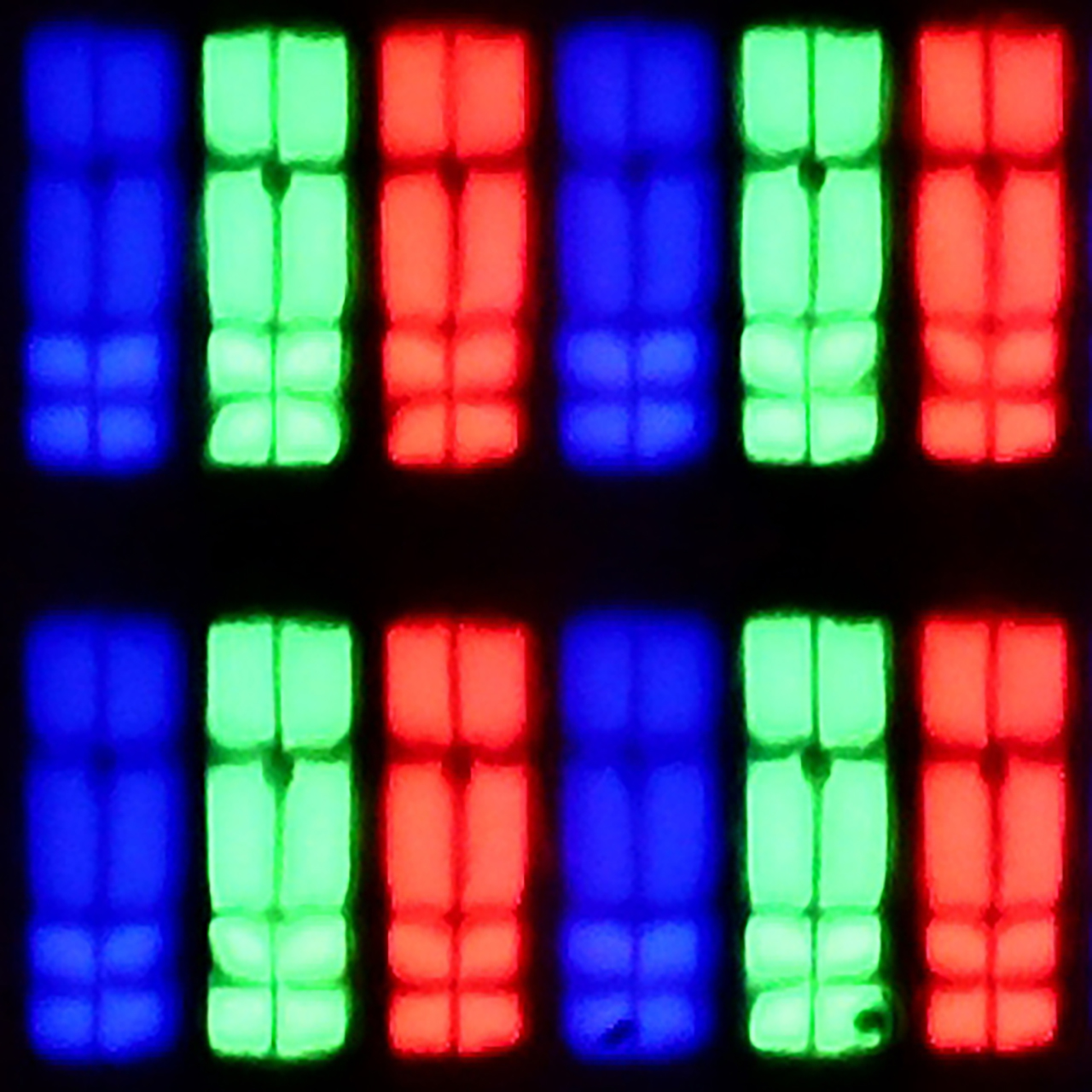
Panel uniformity and thermal imaging:

Samsung QLED Q70D / Q74D / Q77D
TCL C7K / QM7K
TV features
7.4/10
7.3/10
- HDMI inputs0 x HDMI 2.0, 4 x HDMI 2.1 40Gbps2 x HDMI 2.0, 2 x HDMI 2.1 48Gbps
- OutputsToslink (Optical audio), eARC (HDMI), ARC (HDMI)Toslink (Optical audio), eARC (HDMI), ARC (HDMI)
- Network InterfacesWi-Fi 2.4GHz, Wi-Fi 5GHz, Ethernet (LAN) 100MbpsWi-Fi 2.4GHz, Wi-Fi 5GHz, Ethernet (LAN) 100Mbps
- TV receptionDVB-T, DVB-T2, DVB-S, DVB-S2, DVB-CDVB-T, DVB-T2, DVB-S, DVB-S2, DVB-C
Classic features:
- Recording to USB (terrestrial TV)
- Recording programming
- Picture in Picture (PiP)
- RF remote control (no need to aim at the screen)
- Backlit remote control
- Teletext
- Audio only mode
- Bluetooth headphones support
- Simultaneous Bluetooth headphones & TV audio
Smart features:
- AirPlay
- Screen mirroring (Windows Miracast)
- Voice search
- Voice search in native language
- Ability to connect a keyboard and mouse


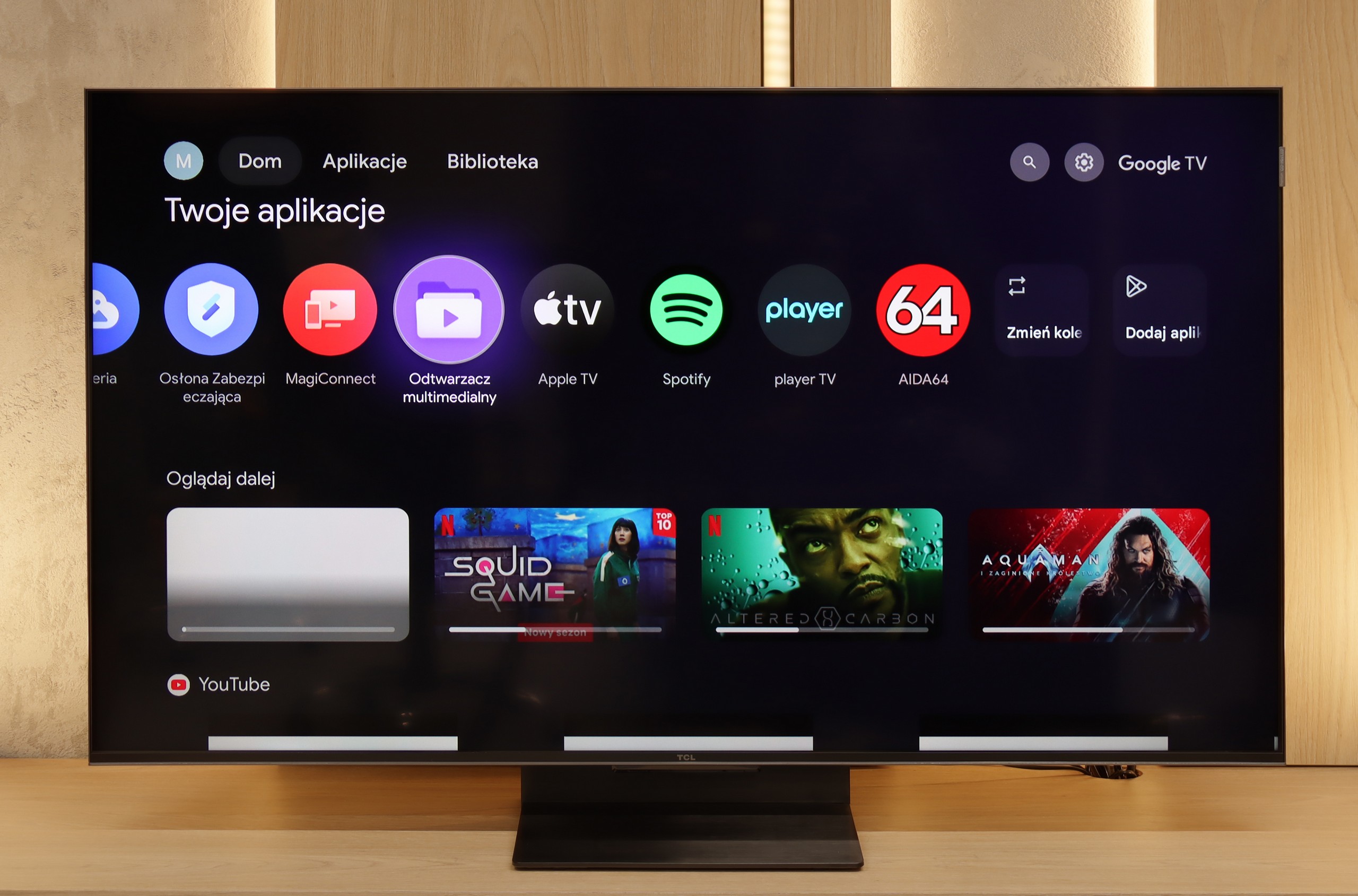
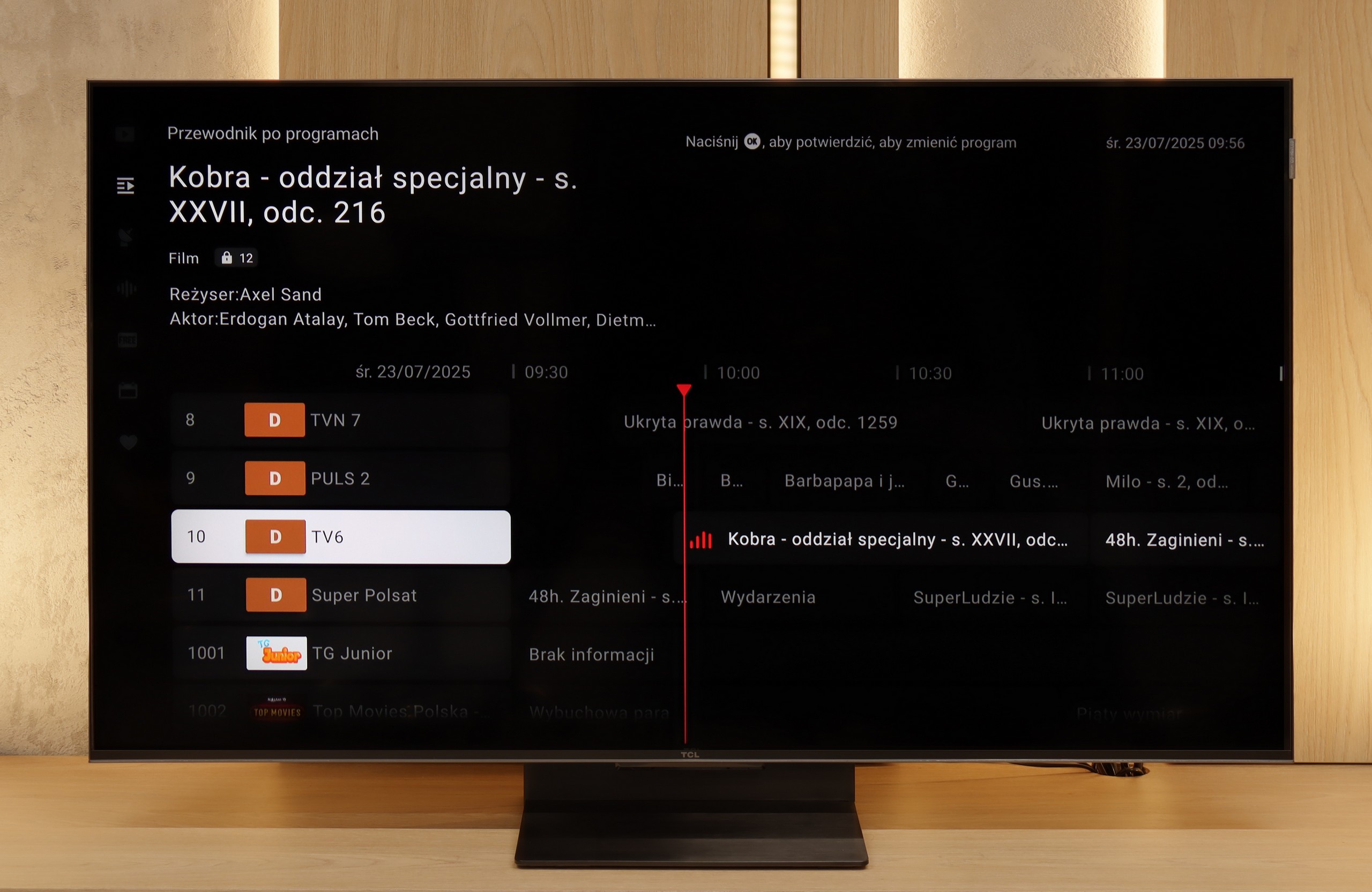
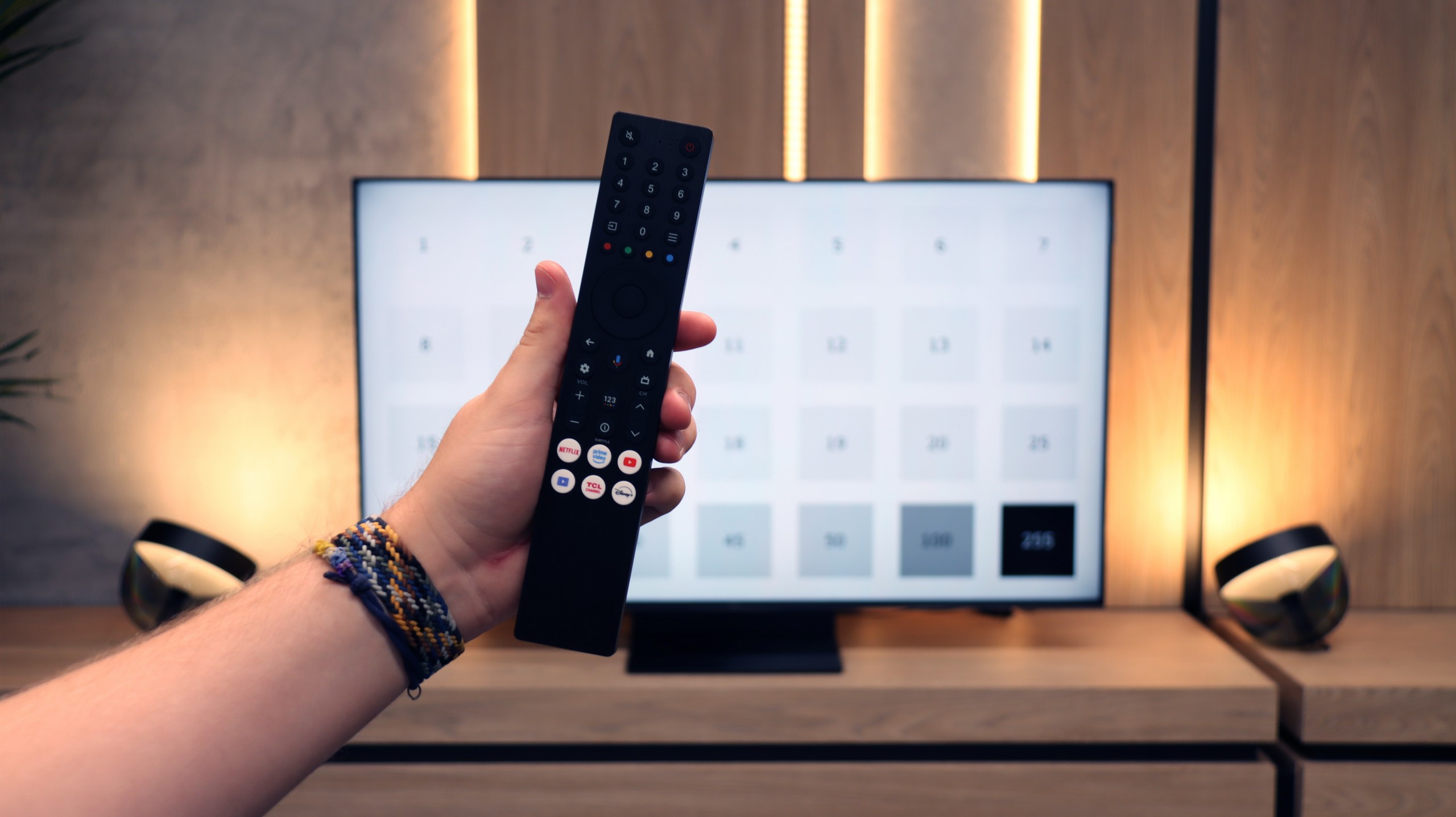
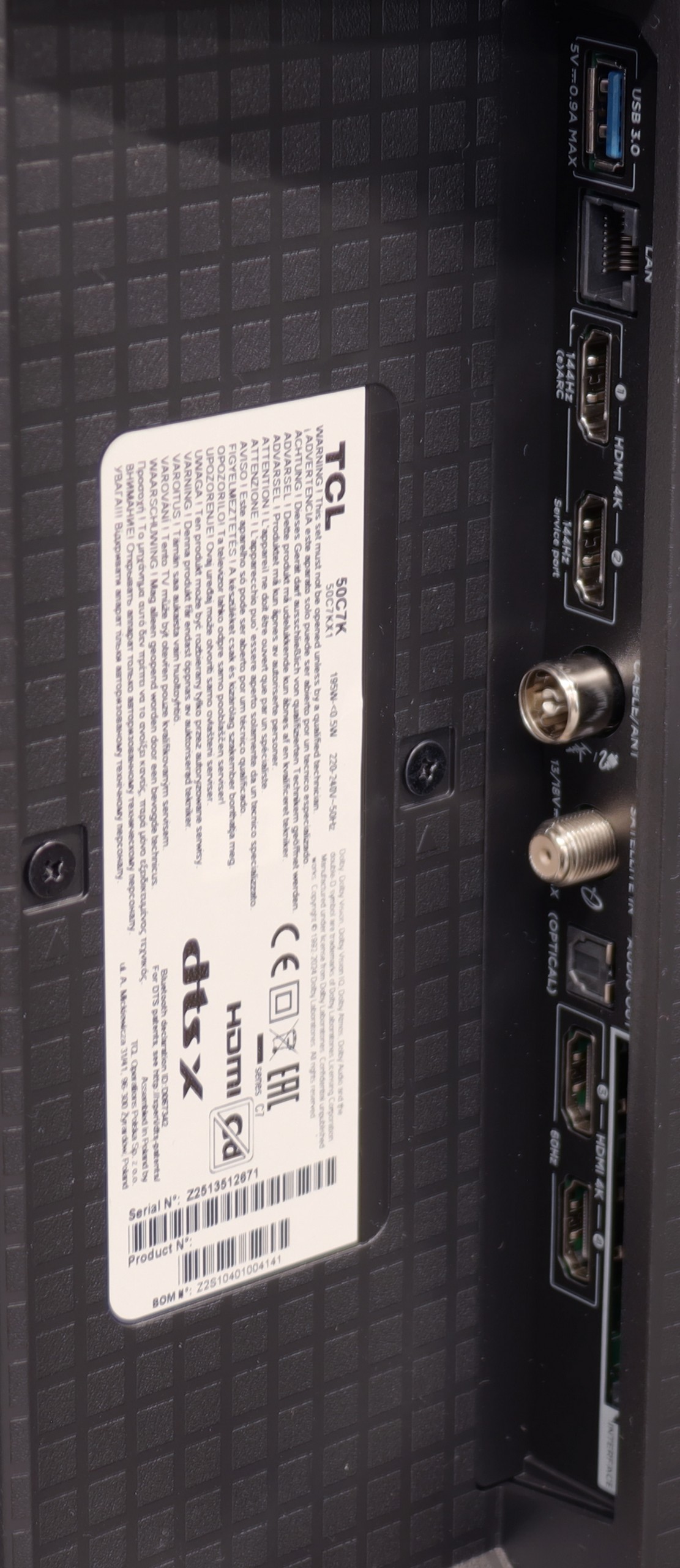
The operation of Samsung Q70D is managed by the proprietary Tizen system. This is fairly well-known software, as the manufacturer has been developing it in their TVs for quite a long time. Its main advantage is smooth operation and a lack of significant stutters, which we can confirm through conducted tests. The biggest downside, however, is its closed nature. Although the app store is quite extensive, we are still dependent on the grace or displeasure of the manufacturer. Therefore, we will not be able to install missing items, even from a USB drive. A perfect example of this is this year's discontinuation of support for the Tidal app. On the other hand, a benefit, especially for Apple device users, is the implementation of AirPlay functionality, which allows for easy screen mirroring from a device to the TV. Fortunately, Samsung also provided the option to connect a keyboard and mouse for much quicker navigation through the TV menu. It’s worth mentioning that the manufacturer has thankfully included a remote that connects via Bluetooth this year, which often wasn't the case in the past. The Tizen system has one more advantage. It integrates very well with external devices, such as the NC+ decoder or soundbars. The connection process is very quick and does not require special skills.
In summary: The Tizen system is very efficiently functioning software, which is certainly a strong advantage of the TV. While more advanced users may complain about the lack of something like KODI, the rest will be satisfied.
SmartTV: GoogleTV
The biggest strength of the TCL C7K in everyday use is undoubtedly the Google TV system. It is thanks to this that we have access to an almost endless library of applications, including some more niche ones that are often unavailable on other platforms. The built-in Google Assistant understands Polish, so we can easily ask what is on TV, what the weather is like, and even give a few voice commands to control the television. The presence of Chromecast and AirPlay, which work smoothly and make life easier, is also a plus.
Usability Features
However, the traditional functions are a bit lacking. Of course, we have the basics – teletext, EPG, or the ability to connect headphones – but that’s pretty much where it ends. There's a lack of USB recording features or picture-in-picture (PiP) mode, which can still be found among competitors. It's also worth remembering that Google TV in the TCL version sometimes has strangely translated menu sections or minor interface errors. These aren’t issues that hinder daily use, but detail-oriented individuals may notice them.
Playing files from USB
9.1/10
9.2/10
Supported photo formats:
Maximum photo resolution:

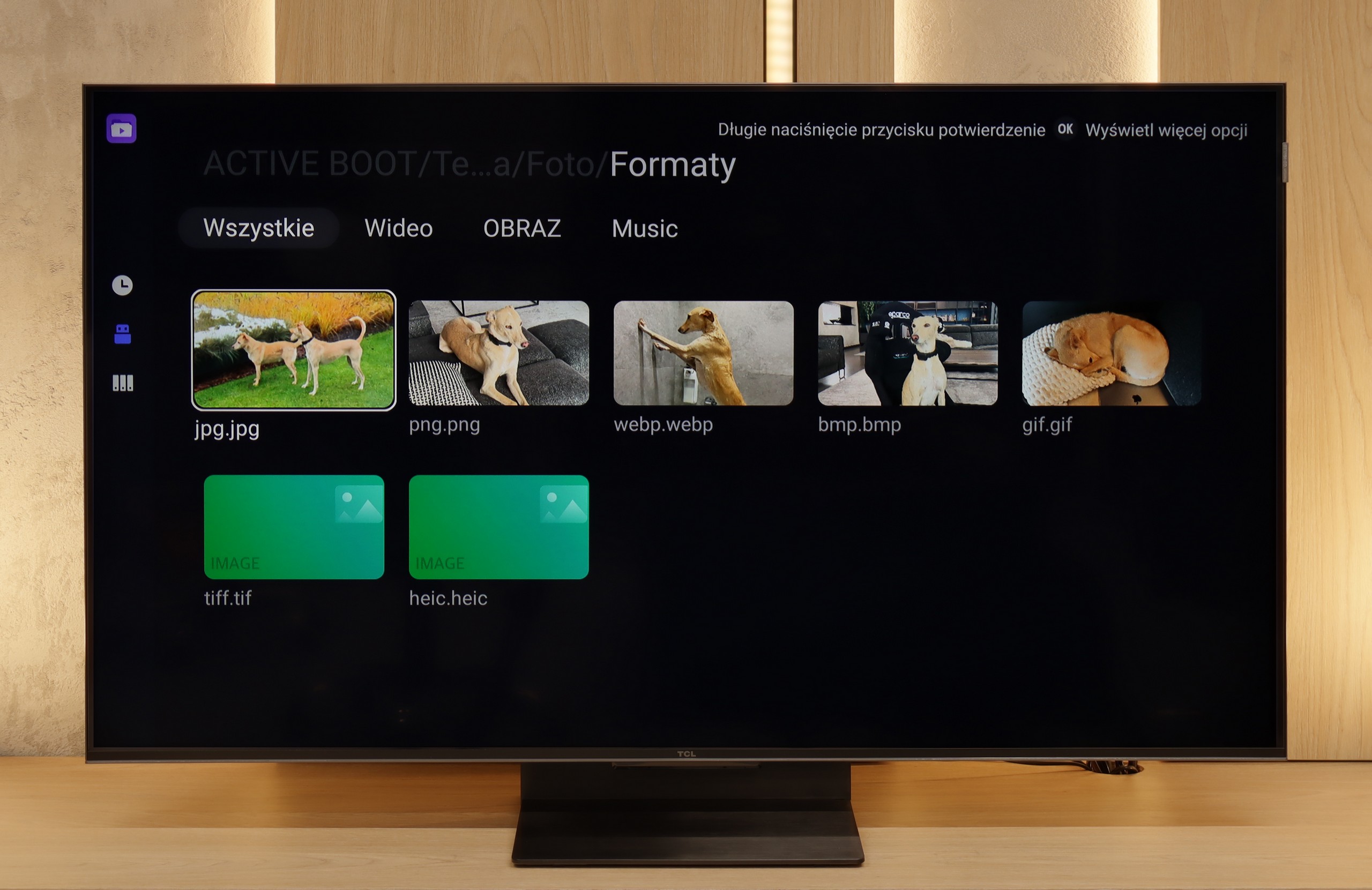
The built-in player Samsung Q70D is a significant advantage. It handled nearly all video and audio files prepared for the testing process exceptionally well. The only exceptions in this regard are of course the Dolby Vision format (which is not surprising) and less popular codecs. Additionally, it is worth noting the support for Polish characters and the ability to change font colours as a positive aspect. However, it struggles more with photo formats, as it only supports JPEG among the popular ones. There's definitely a lack of formats like PNG or Apple's HEIC here.
The built-in file player in the TCL C7K performs really well. It supports most popular audio and video formats, so if we want to quickly plug in something from a USB drive and get it going – there shouldn't be any problem. Of course, as is often the case, you can find some minor shortcomings – not every exotic codec will work (Apple's HEIC), not all subtitles will be perfectly synchronised (txt.). However, the biggest advantage of this television comes to the rescue, which is Google TV. With access to the Google Play Store, we can easily install an alternative player, such as VLC, and then no files will frighten us.
Apps
8.7/10
9.6/10














































Sound
6.3/10
7/10
- Maximum volume-76dB
- Dolby Digital Plus 7.1
- Dolby True HD 7.1
- Dolby Atmos in Dolby Digital Plus (JOC)
- Dolby Atmos in Dolby True HD
- DTS:X in DTS-HD MA
- DTS-HD Master Audio
The built-in audio system Samsung Q70D, due to its slim design, is not among the most outstanding. Overall, it's fairly balanced, although we wouldn't recommend cranking up the volume to levels higher than 2/4 of the scale. However, if we have a home theatre system, there is a range of codecs available, and we can enjoy the presence of the most important ones, namely DTS-HD Master Audio and Dolby Atmos.
To be honest, we didn't expect much from the sound of the 50-inch version of the C7K model. Usually, in such sizes, it's hard to find anything more than thin, flat sound. But here – a pleasant surprise. The sound turned out to be really enjoyable, with good clarity and even a subtly noticeable bass. This is probably linked to TCL's new collaboration with the Bang & Olufsen brand, which is a novelty for 2025. Whether the C7K actually contains original drivers from the Danish premium brand – we can't confirm that. But the end result still deserves a thumbs up. For a TV without a soundbar – it sounds quite nice.
Acoustic Measurements
No acoustic data
76dBC (Max)
75dBC


